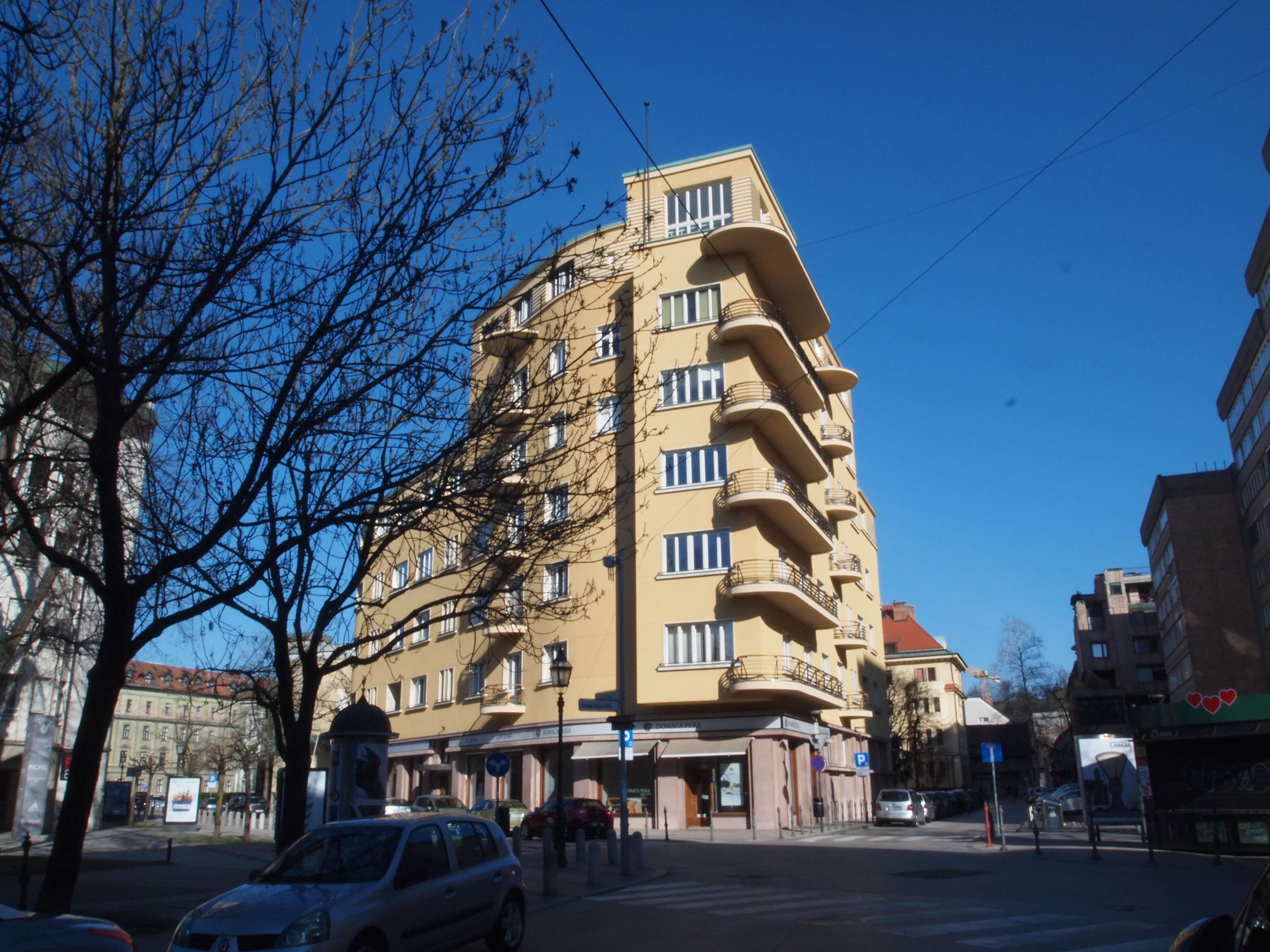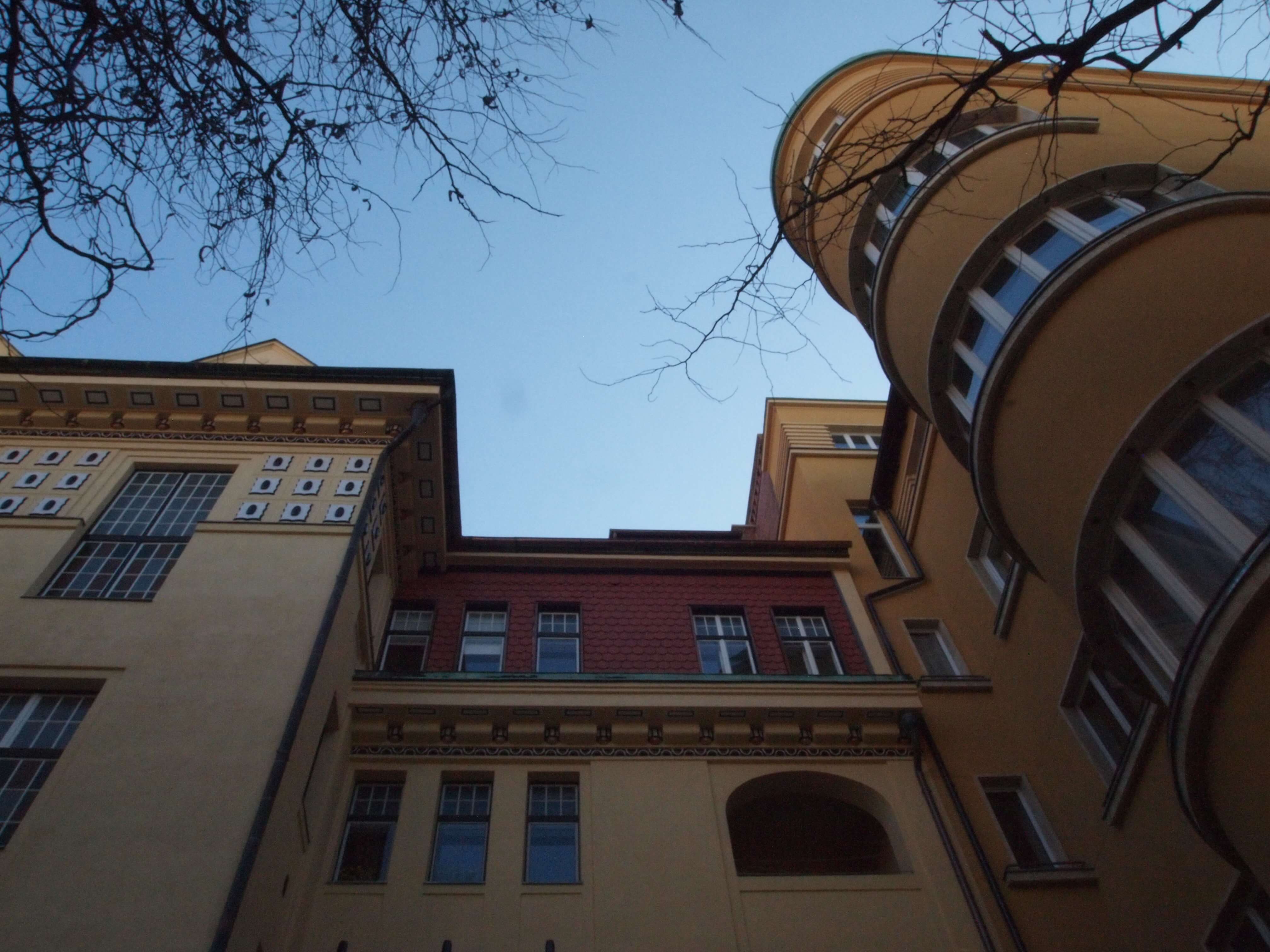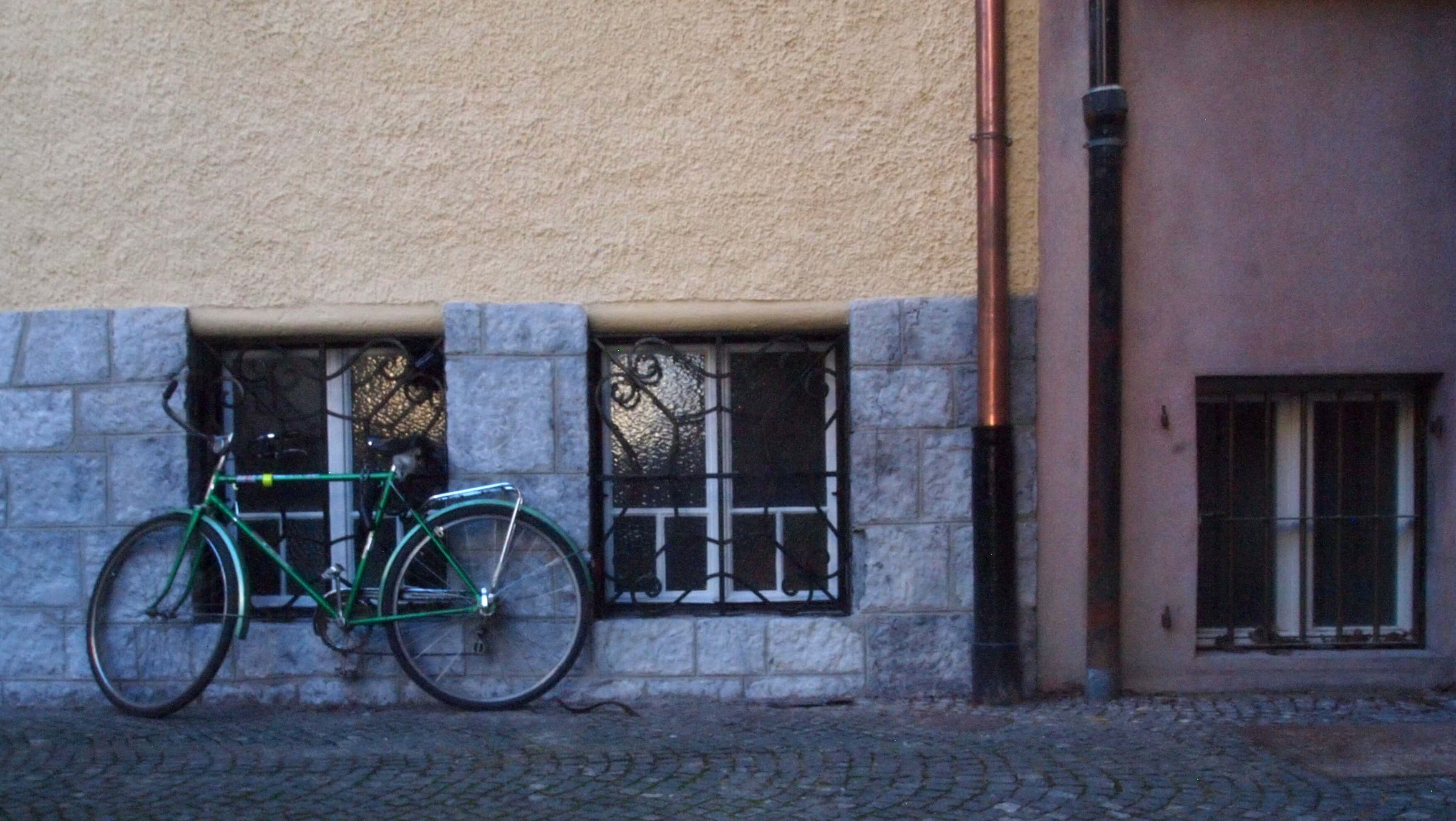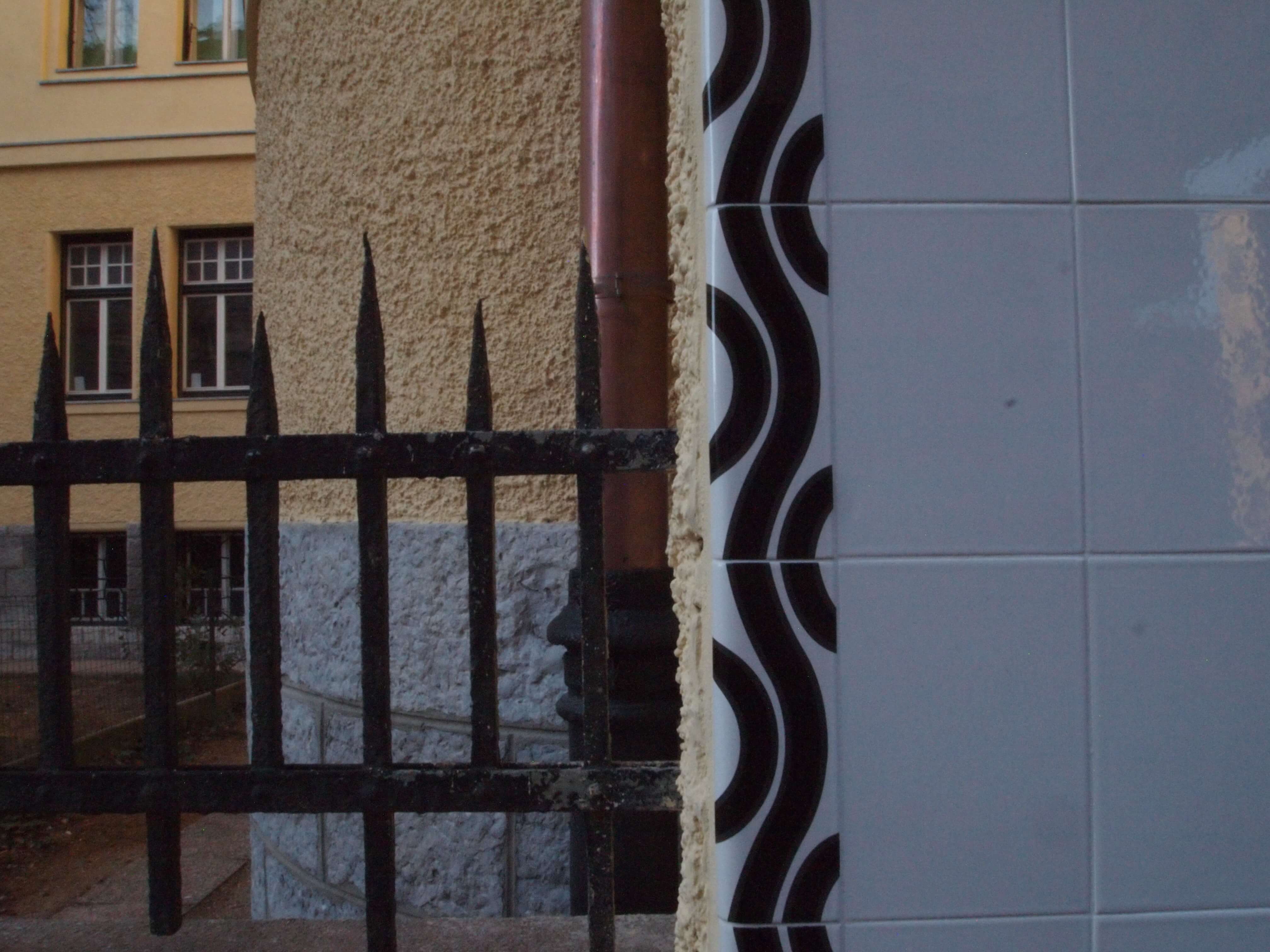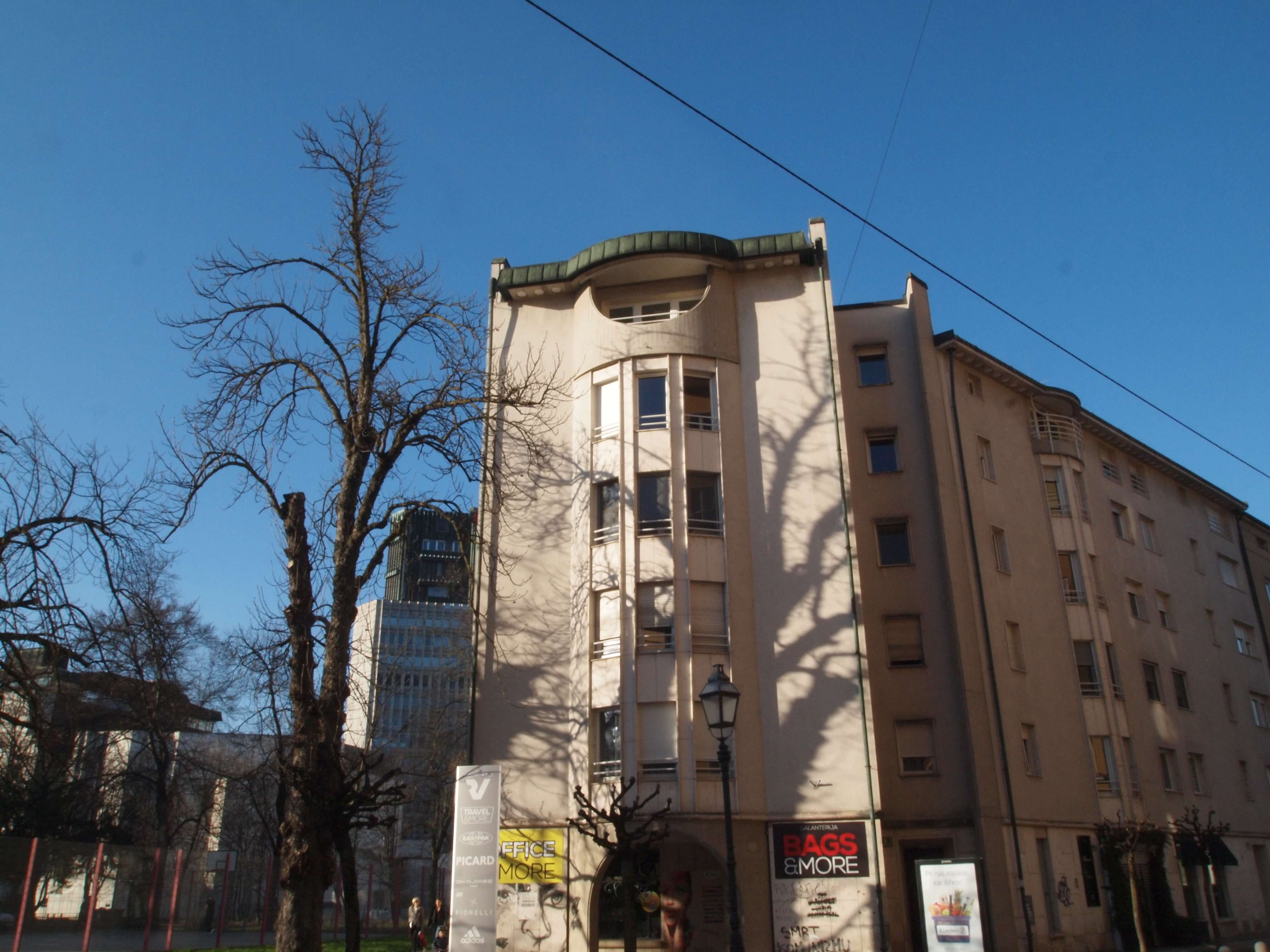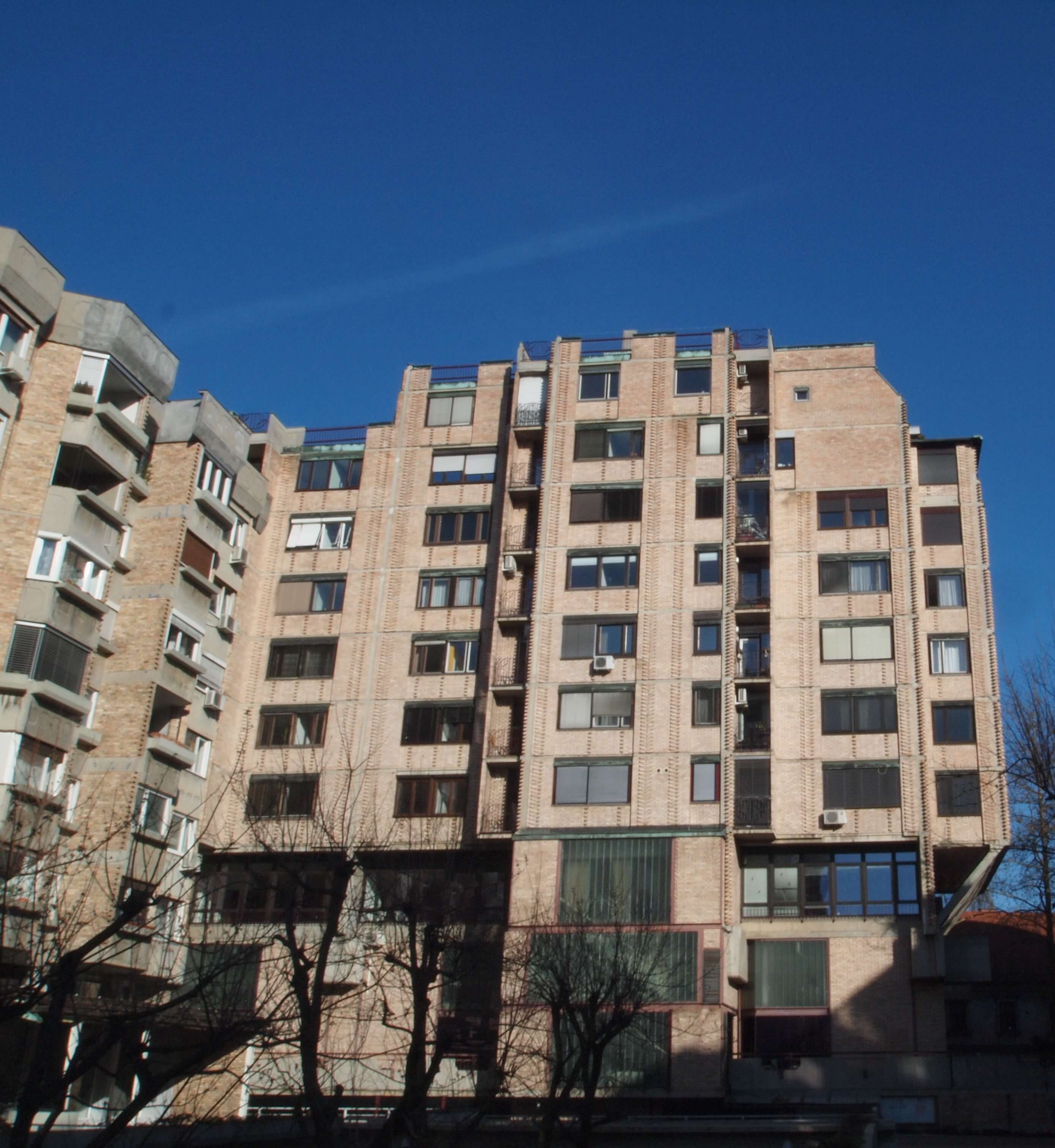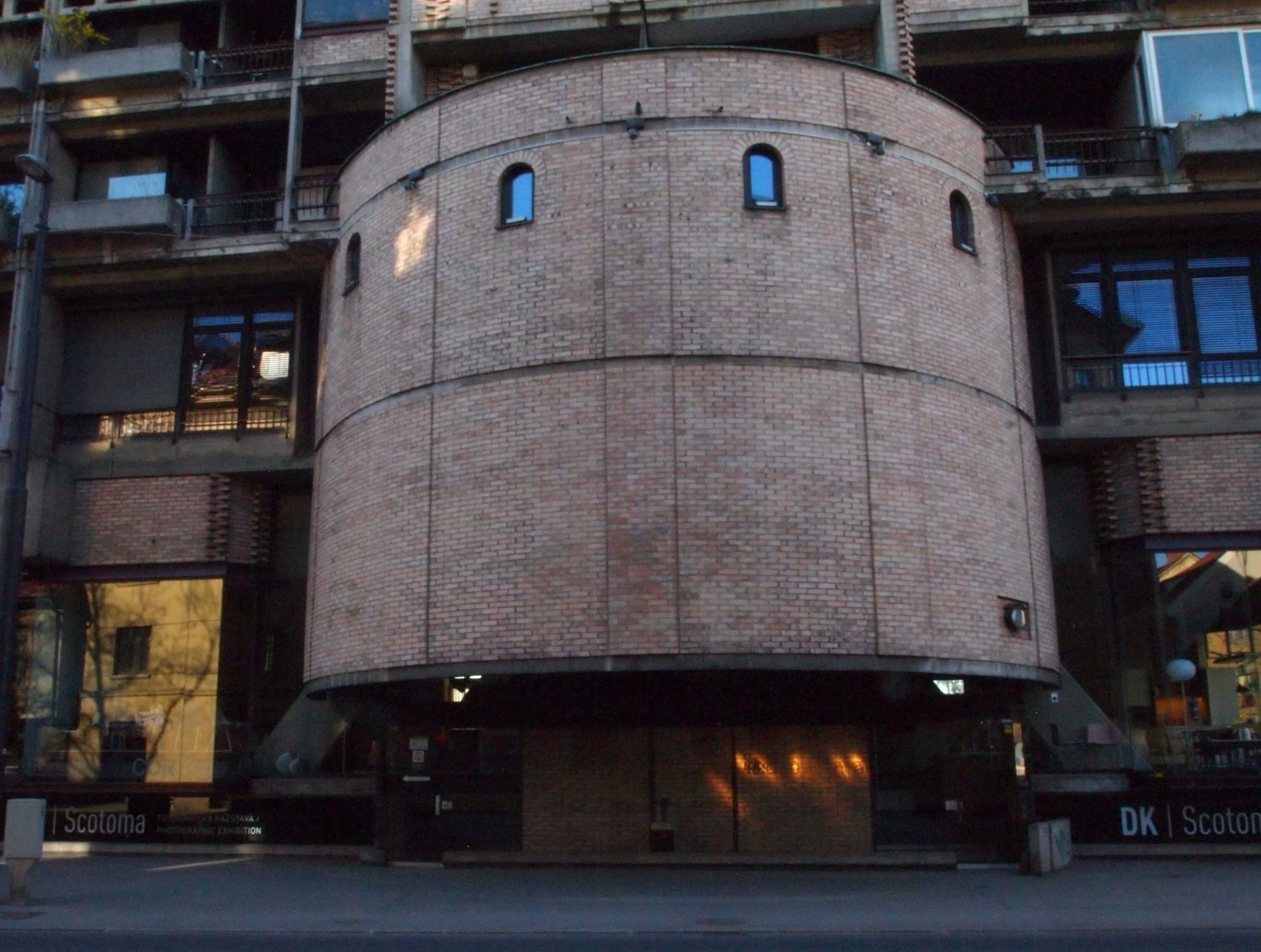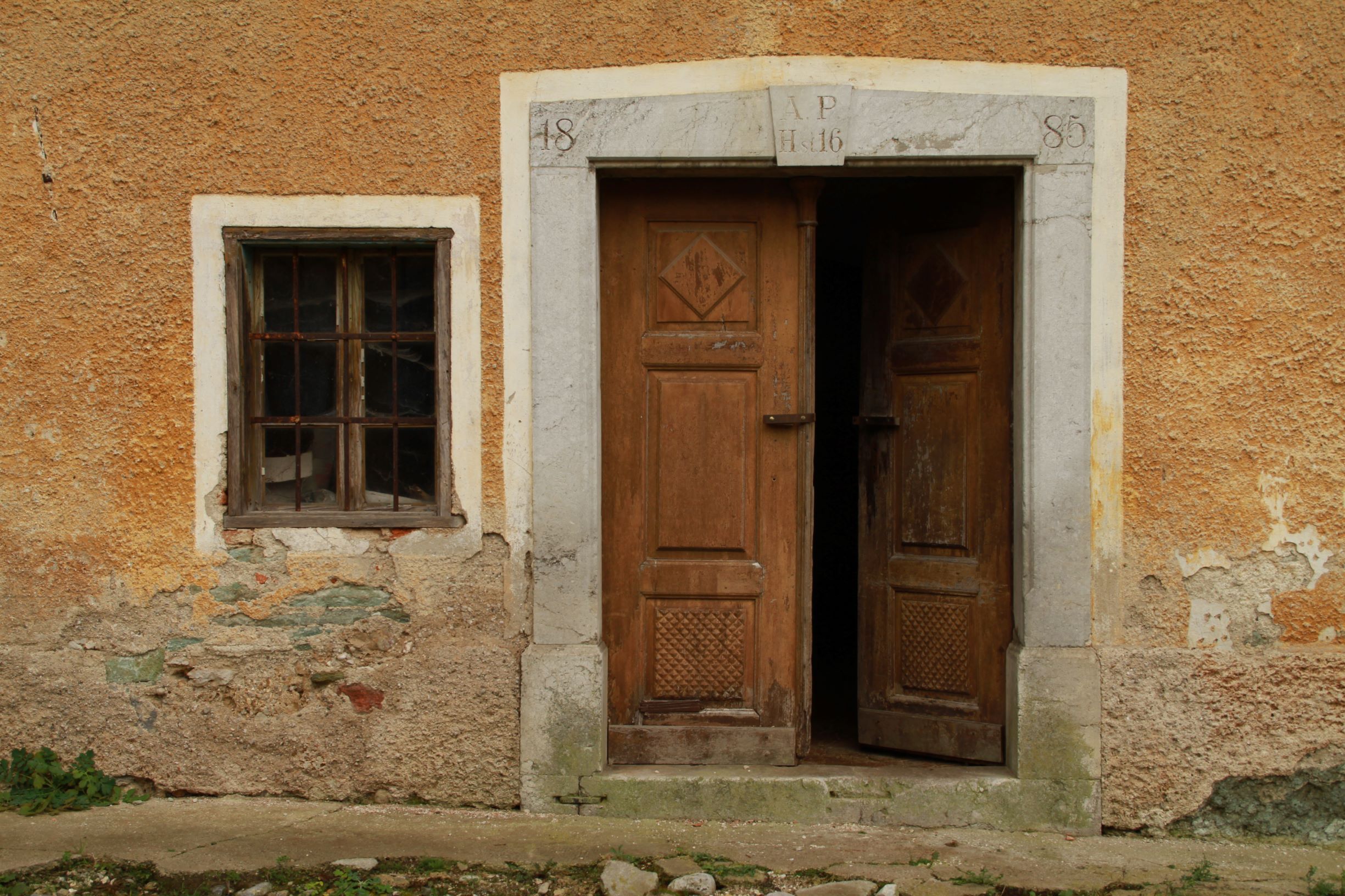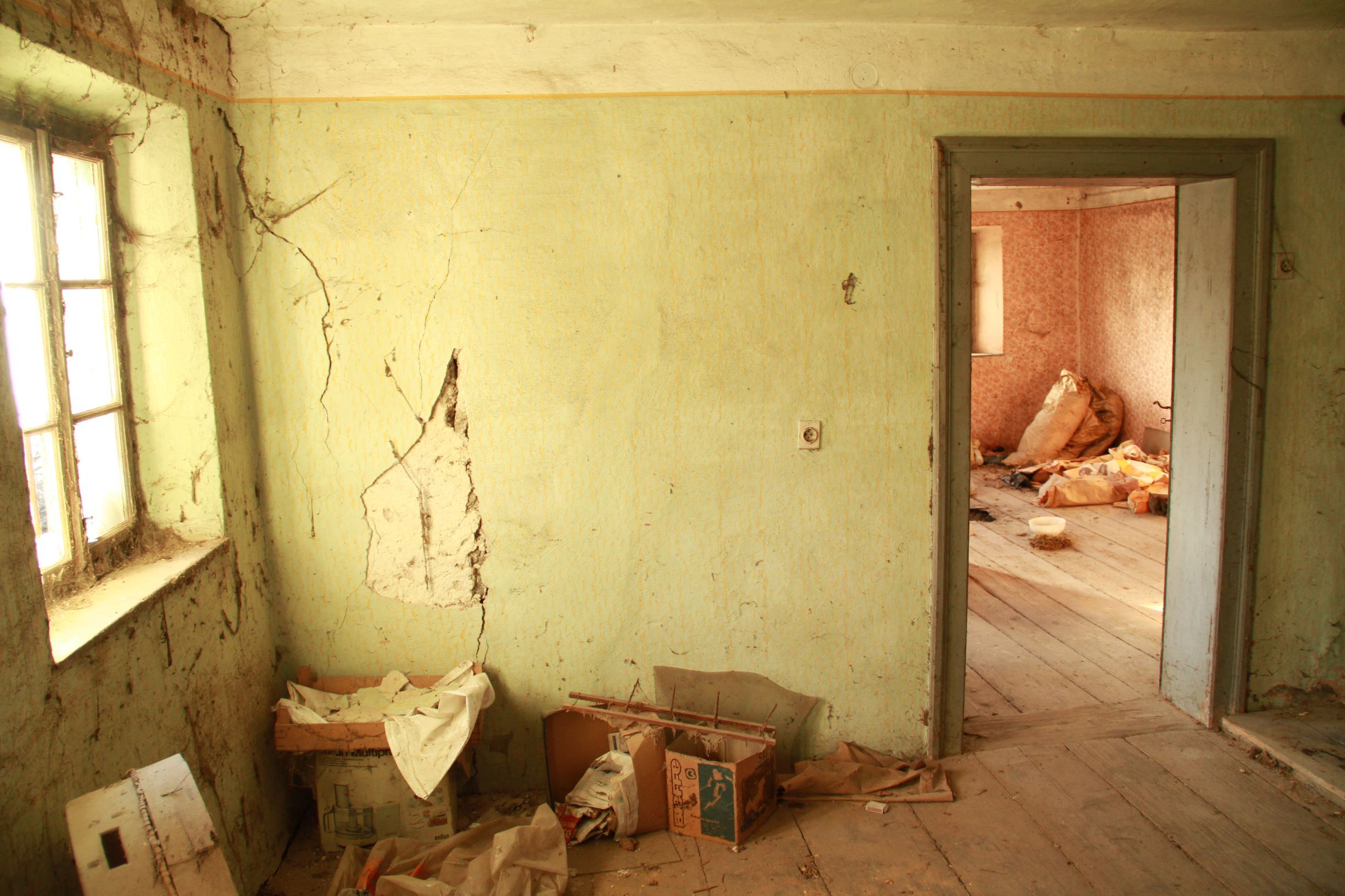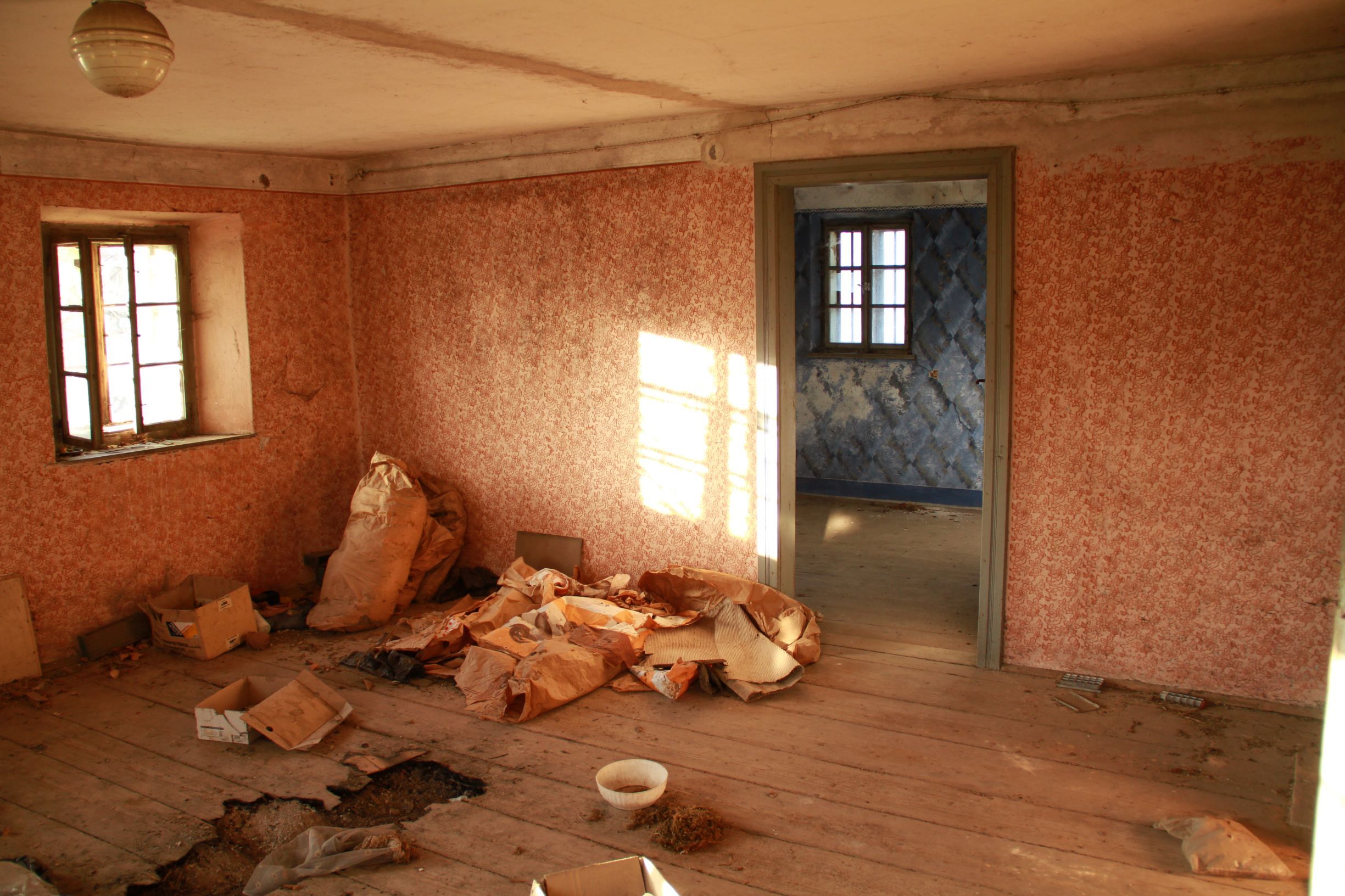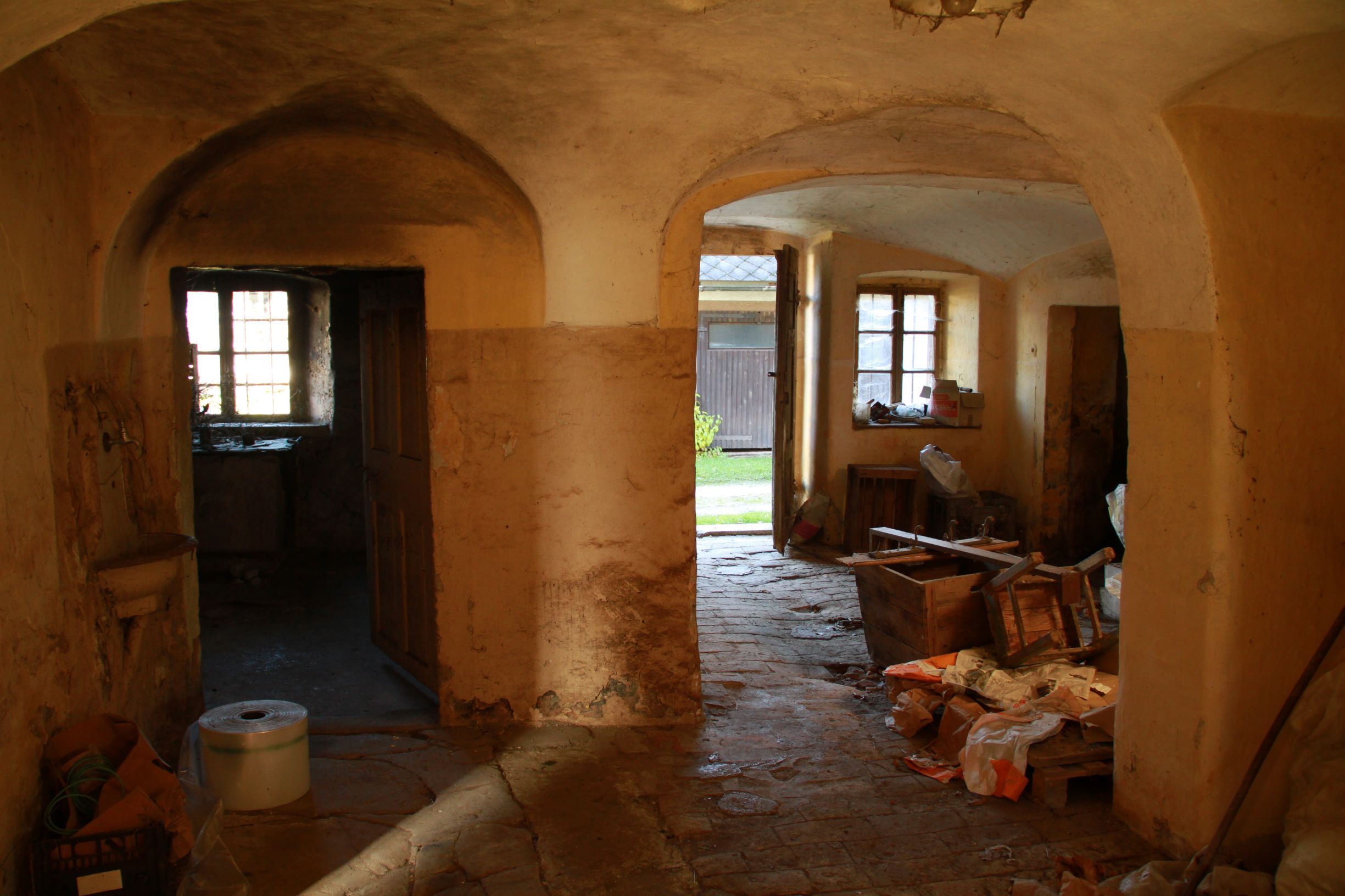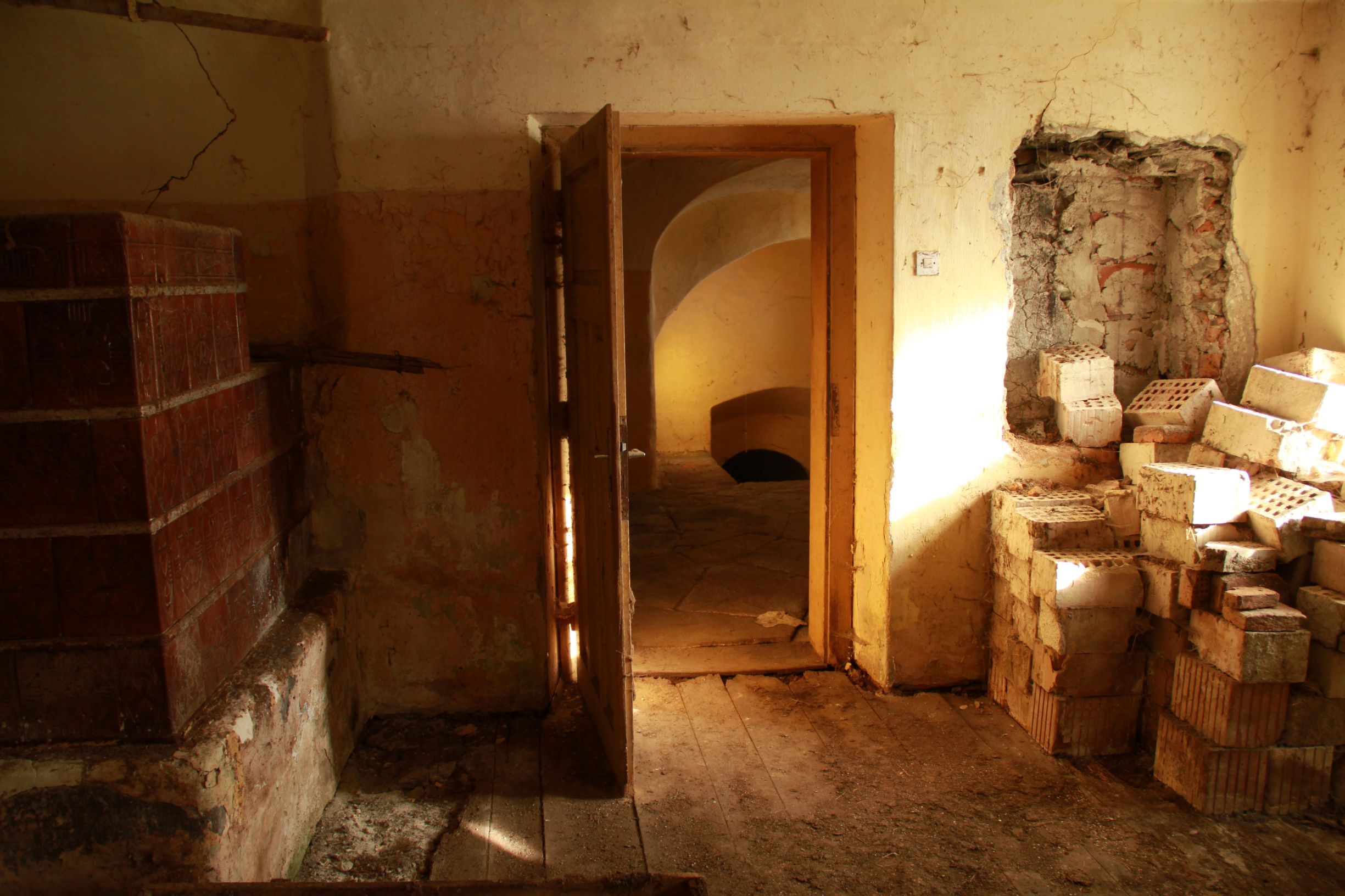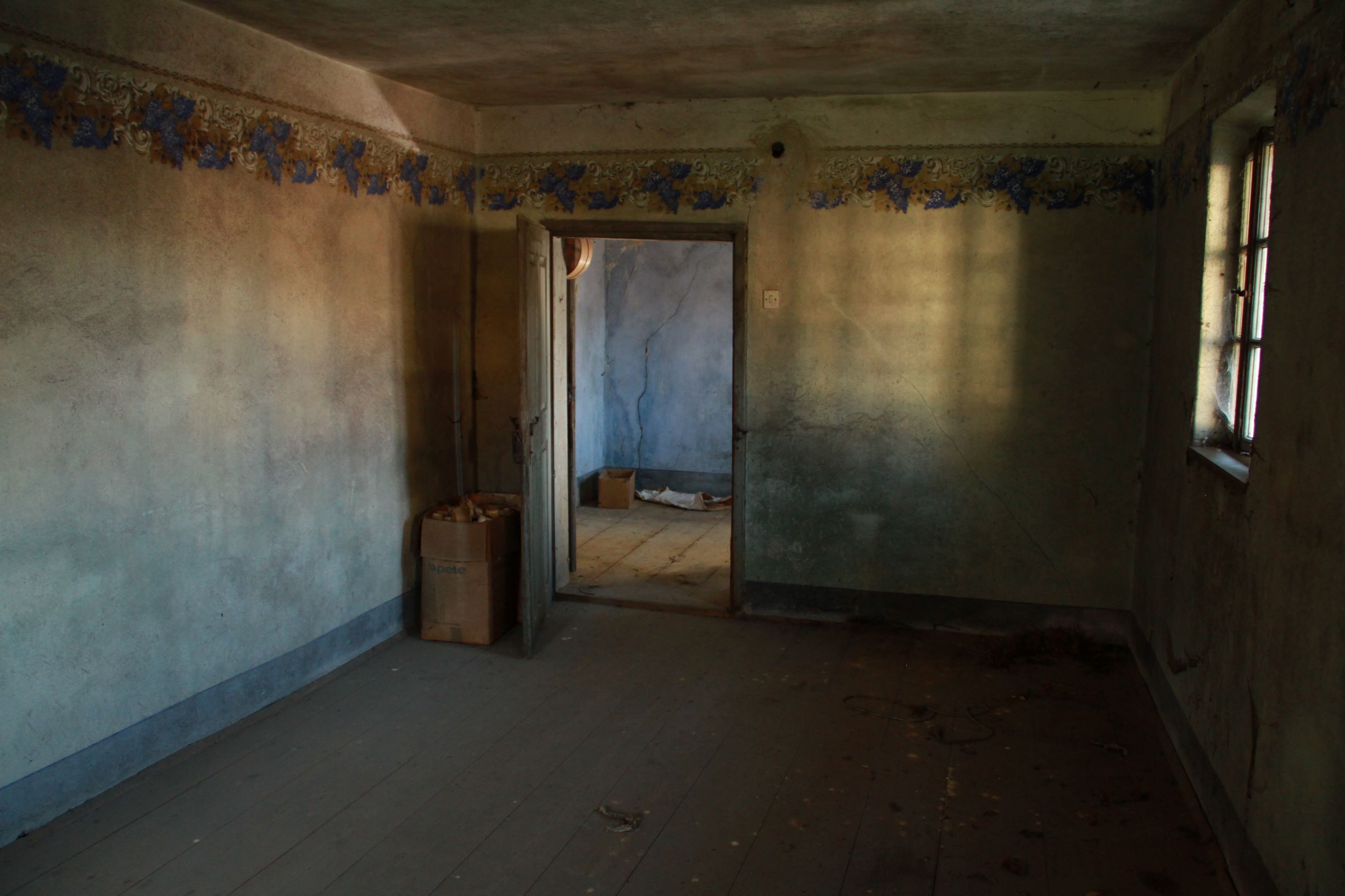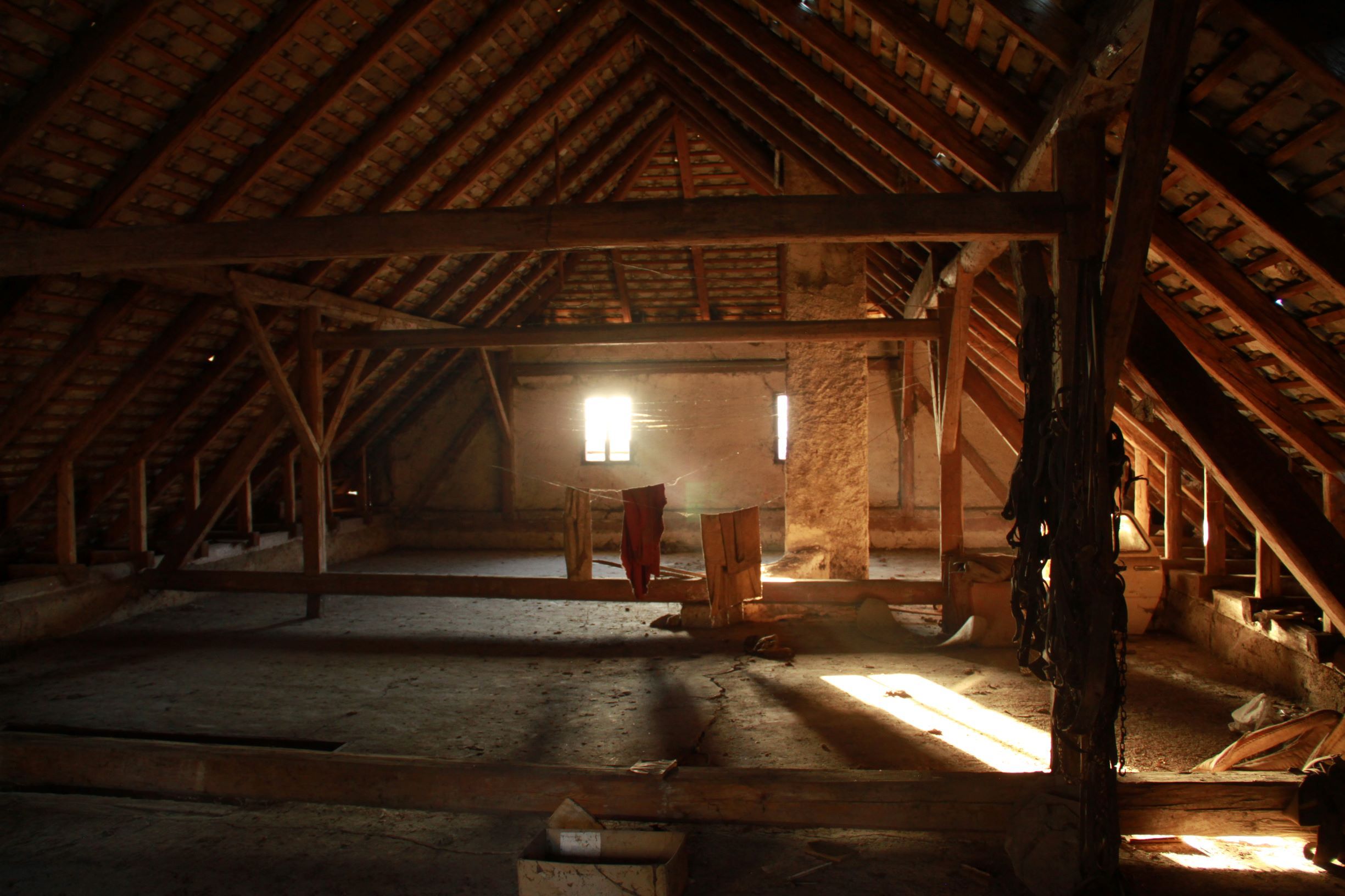Meet the People
We recently got in touch with The Miha Artnak, the notorious Slovenian artist that’s been trolling the media for the last two years. He’s been exposing the vulnerabilities of reporting with his fake news projects since December 2017, where he convinced the media that he sold an artwork for more than $1 million to a Chinese bank. As a result, he was on the radio, on the front page of the most widely read newspaper in the country, and the main story in the evening news.
In his next stunt, he used the existing visual image of BTC City to convince a non-Slovenian public that there was now a Bitcoin City in Slovenia. BTC City is a Slovenian shopping mall - which actually stands for Blagovno trgovinski center, and not Bitcoin. The fake news at first angered BTC City officials, but later inspired them to actually rename it, with Bitcoin City a registered trademark that’s gaining interest worldwide.
Miha is also a member of the ZEK crew and a managing director of the design studio Ljudje, which has produced work for, among others, the Museum of Architecture & Design, Klub K4, Flaviar Inc, and Gramatik
Not quite sure where to begin when interviewing such a figure, we decided the best approach was to just surrender control and let the man himself ask and answer his own questions,
The painting made out of bird faeces that was allegedly sold for more $1 million has changed the perception of how we value art, yet it still isn’t hanging in any of the museums. Now why is that?
It’s hard to comment on that. Maybe the current generation needs to be overthrown or maybe I just have a too high an opinion about my work. I haven’t marketed it to the right network. It’s also true that I don’t fill out applications and I don’t attend as many events as I should.
How did this project influence the art scene and the artists?
I definitely inspired people to lie more. But only in my circle of course. I need to change that.
And how did this affect the media?
The first fake news stirred some things up. They didn’t like it of course. But it made some people think. I still see loose ends though – journalists publish a lot of unverified news every day. I need to exploit that again.
Your recent performance, Crossing (Jaywalking), criticizes artists that think they can do whatever they want in the name of art – even breaking the law. How did the public respond to it?
The general public read this performance very differently. Most people outside of my bubble hated it. But that was the plan – I wanted to be perceived as a misunderstood bullshit artist that can do what he pleases without any consequences. So it pissed off a lot of people who then wrote ridiculous comments, which makes my audience laugh.
You just had an exhibition with your design studio Ljudje in the Museum of Architecture and Design. You’ve criticized design as a profession. Isn’t that hypocritical, or at least self-sabotaging?
I partly agree with that. All professions should evolve and get better in the quality of their work. But all professions are also subordinate to capitalism. We wanted to show that no matter how excellent the surgeon is, she still prioritizes her patients by wealth, the majority of people still vote based on the likeability of the candidate, and direct democracy prefers individual interest over the common good. The exhibition is based on the latest standards and trends in design but the problem lies in the initial input - ideology. This is a wake-up call. Is there a purpose? Is there a common goal? People are waiting for a better system to be articulated and give us meaning, and we’ll gladly help designing it.
What are the plans for the design studio, and your next art project?
We’d like to use design for a good cause, to work on projects that don’t create as much pollution, to create better interfaces for users, tell better stories and to create courses for the next generation.
I’m also getting ready for the ZEK 2020 exhibition and creating my first solo art exhibition. I can’t wait.
You can learn more about all these projects here, while the Ljudje design studio can be found here.
This Saturday, 22 June (2019) is the 8th annual Day of Japan (Japonske Dan) in Ljubljana, organized by Genki Center and the Embassy of Japan in Slovenia. We got in touch with Maja Rome, of the Genki Center, and learned more about her work, the Center, and the day itself.
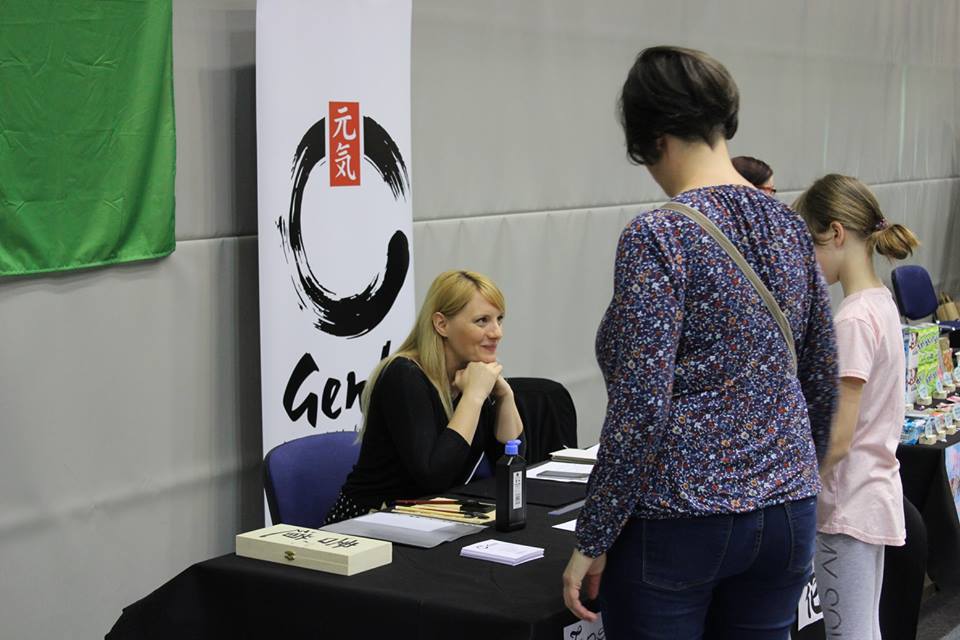
What's your association with Japan?
I am a Japanologist and a sociologist of culture, graduate of the Faculty of Arts in Ljubljana and also studied at Joshi daigaku in Tokyo, Japan. I am a founder and a CEO of Genki Center, and also a president for the organisation behind the Day of Japan event. As a professional in the fields of Japanese culture and language, and a passionate learner of the culture and its language, I carry with me strong passion to promote Japanese culture to Slovenian people. Since it’s very rich in its history, folklore and heritage, many new areas of interest can be found in this island nation.
What is Genki Center?
It’s the first private Japanese educational and cultural centre in Slovenia. We specialize in this area and provide Slovenian people with different kinds of support regarding this culture and language. Our primary activity is teaching Japanese, we have a team of Japanologists and also a native speaker who is a professor of Japanese. We strive for a modern techniques of teaching and provide a very high quality way of learning the language and culture. Together with our clients we create a strong community of people who have the same interests. That is why we are not a language school, but a community of people, organizations and interest groups brought and kept together with the same aim of exploring different aspects of Japanese culture and language.
As part of this work we provide support for companies, advising them on business ethics and language norms, as well as Japanese business relations. We also offer various events, workshops and lectures to teach Slovenian people about Japanese culture, with some children. For example, we have been organizing Japanese summer camps and different Japanese themed events.
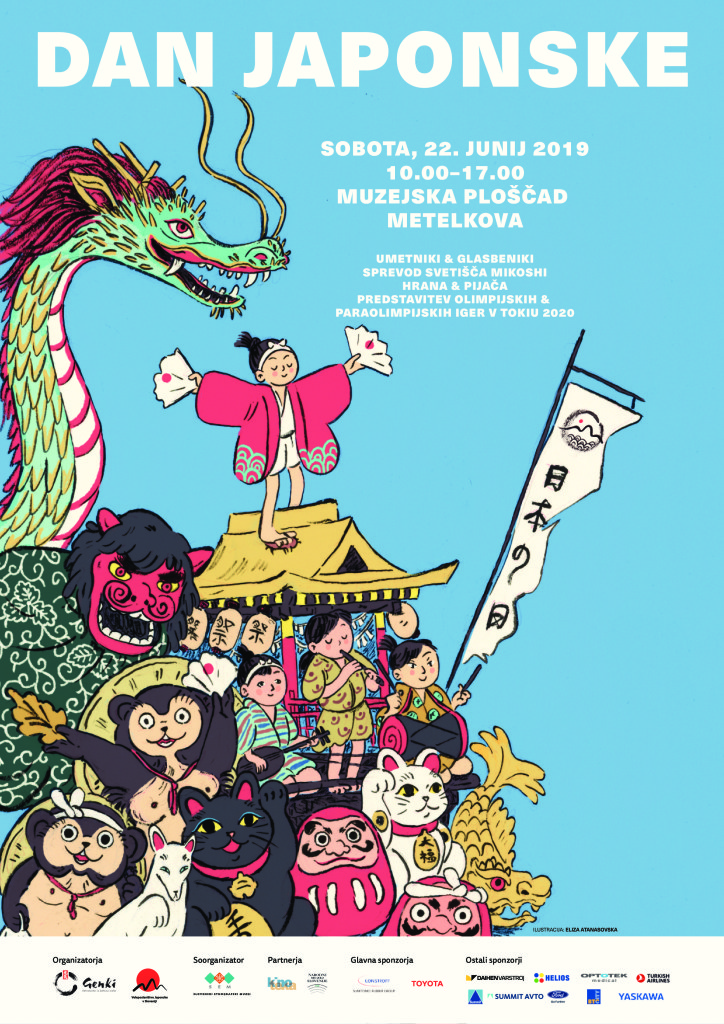
This Saturday, June 22 (2019) is the Day of Japan. How did that start?
This year will be the 8th Day of Japan festival, which has two organizers. The first is Genki Center as initial idea provider and organizer, and the second is the Embassy of Japan in Slovenia, which has co-organized the event for the last seven years.
The idea for the event came after my first small event in Kranj, with the opening of Kranj's new library in 2011. After the success of the “Japanese Evening” my college and I planned to organize our first event at lake Zbilje with the help of local tourist organization. That was in 2012, with the 20th anniversary of diplomatic relations between Japan and Slovenia were taking place, and so we invited the staff at the Embassy of Japan in Slovenia, and a sakura tree as planted to mark the event. After that the Embassy invited me to continue organizing the event with them, and we have been working together successfully ever since.
It may only be one day, but it’s a lot of work. The organization takes about half a year to plan, and every year with the help of volunteers we build an event site from scratch and also tear it down once it is finished.
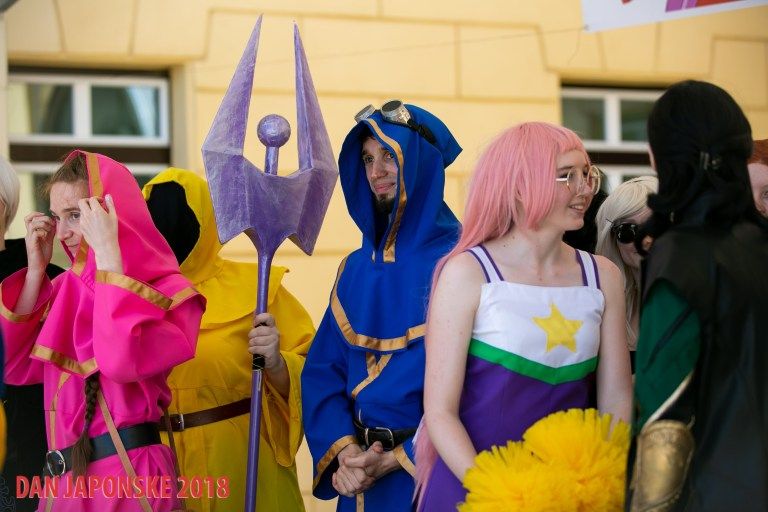
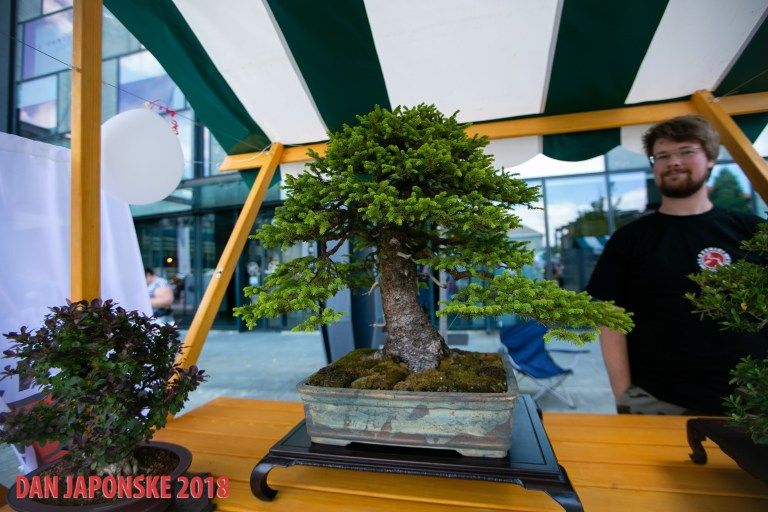
The idea is to bring together the many people in Slovenia who are somehow connected with Japanese culture in a daily life, and also companies and individuals. And it’s not just about showing Japan to Slovenians, but also a way for Japanese people living in Slovenia to feel a part of the community and share their culture with others.
The Day of Japan is a single day event where we strive to bring together as many different aspects of Japanese culture in the same place, at the same time, and a way for people to basically visit the country without leaving Ljubljana. In a single location [the Metelkova museum quarter] we have more than 80 activities, 50 stands, two stages and one lecture hall where we cover many different cultural aspects of Japan – the language, arts, sports, food, crafts and stores. We want to offer as many quality services, products and activities as we can find in Slovenia that are related to Japanese culture. We’ve also invited some guests from Japan, who are willing to enrich the event. This year there are more than 250 participants who are making it all possible, along with more than 30 volunteers.

As well as the Embassy of Japan, the event gets a lot of support from companies, and this year there’ll be something from Toyota, Sony, Turkish Airlines (who will be giving away two plane tickets to Japan), BTC City will be there its Society 5.0 project, along with people from the Olympic Games committee and the Paralympic Games committee, who will have a special Olympics corner.
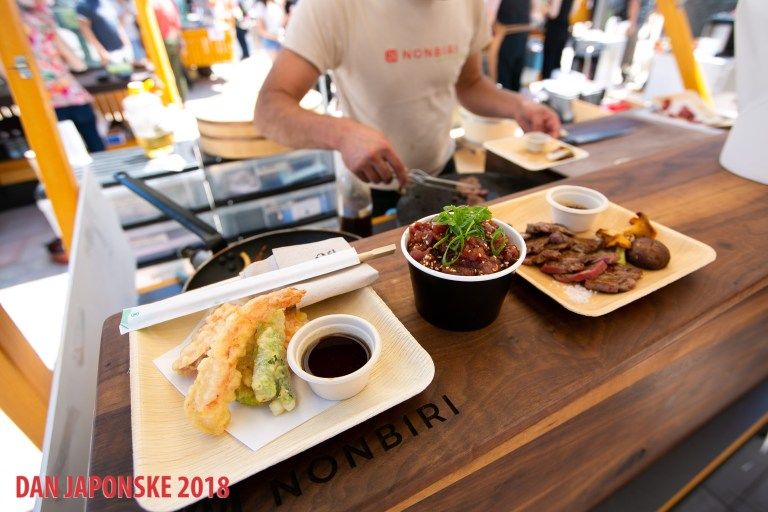
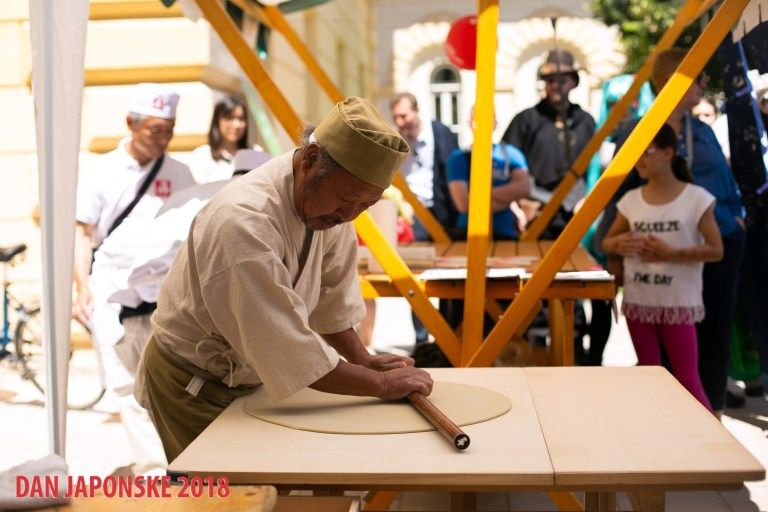

What can people expect to find there?
Among activities we are offering are many martial arts, such as karate, aikido, kyudo, ninjutsu, iaido and kendo, and judo. We also have many artists, young ones who are specializing in Japanese anime and manga, and they will provide us with unique artwork. There will be traditional crafts, too, like ceramics, wooden lacquer, kanzashi and tamari balls. Also in the spiritual area we have zen gong meditation, reiki, and we used to have shiatsu. There will be bonsai, ikebana and Japanese calligraphy, and for younger people there’s a manga corner and cosplay.
For food, we have a sweets corner and food corner, with quite nice variety of Japanese different dishes. The people preparing the Japanese food are trying to stick to the original taste, which is quite difficult to do in Slovenia with regard to finding high quality ingredients. We’ll have a school for Japanese language, Japanese literature, books and travelling to Japan. Every year we also have a children’s corner with many Japanese arts to them to enjoy.
Beyond that, in the lecture room of the Ethnographical Museum of Slovenia we have a photo exhibition, a lecture on traveling to Japan, and workshops for ikebana and calligraphy. On the main stage we have a concert of Trio Tenorjev [Three Tenors], traditional buyo dance, and Japanese pop songs, as well as much using a koto, a traditional instrument.

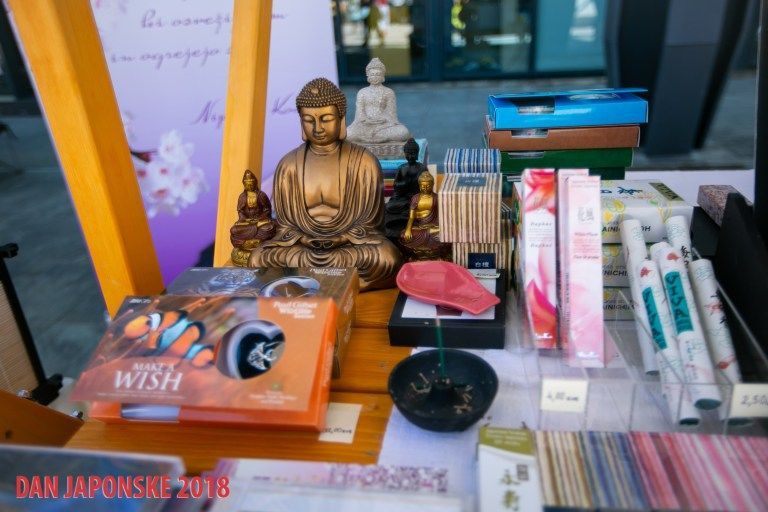

One very special thing will be a portable shrine brought from Kasuga jinja, close to Yokohama, carrying many Japanese deities in order to bless the area with good fortune and luck. It should be a great event. Last year we had more than 3,500 visitors, and hopefully this year the number will be even greater.
You can find the schedule for the Day of Japan (Dan Japonske) here, and follow Genki Center at its website or on Facebook. The event takes place in the museuem quarter of Metelkova, shown on the map below.
A little while ago I wrote about a wonderful guidebook to the capital, Let’s See Ljubljana… Beyond its utility and charm, it’s a book that means a lot to me personally, because when I first arrived in Slovenia and was hit by culture shock and disorientation, after almost two decades in the 24/7/365 neon glare of Asia, it gave me a way into the quiet town of Ljubljana through reliable landmarks that had stood the test of time and would serve as anchors for my new life
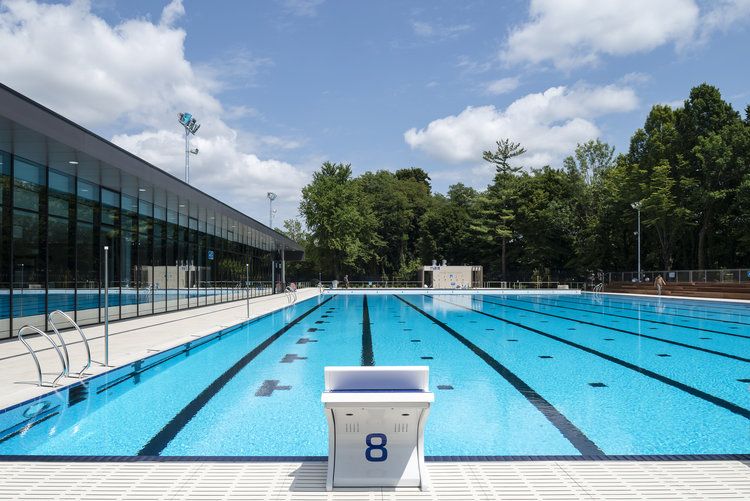
Swimming pool, Kolezija, Ljubljana. Designed by Ravnikar- Potokar. Photo: Virginia Vrecl
I adopted the pen name JL Flanner because it was slightly more subtle than LJ Flâneur, but the intent and belief remained. If I gave myself up to the city then I’d be rewarded somehow, even if just with a better sense of place and a clearer understanding of my surroundings. So when I got the chance to meet one of the authors, Robert Potokar – the other being his partner in life and work, Špela Kuhar – I jumped at it, both to express my gratitude and to see what else I could learn. It was a meeting that exceeded all expectations.

Buildings in Nature Reserve Škocjanski Zatok, Koper. Designed by Ravnikar- Potokar. Photo: Virginia Vrecl
Robert and Špela work Ravnikar - Potokar, and fans of architecture will recognise that second name, although note that this Ravnikar isn’t directly related to Edvard, the student of Plečnik who also left a considerable mark on the Slovenian capital. Edvard Ravnikar’s most visible work in Ljubljana is the complex in Republika trg, but his work there stretches out beyond this monumental landmark, and is easily spotted if you’re familiar with some of his recurring motifs, like the brickwork patterns and copper roofs. It’s in one of these other buildings, just a short walk away, that Ravnikar - Potokar has its offices, and where I met Robert to thank him for his work. We had a long, undirected conversation, without interview questions and with a walk through the neighbourhood, and what follows is some of what I learned.

A Square and a Playground Under the Castle in Škofja Loka. Designed by Ravnikar- Potokar. Photo: Virginia Vrecl
On his books
I was born in Kranj, but I spent my childhood in Škofja Loka, which is my first love. I’ve also written a guidebook for the Gorenjska region, along with my wife, Špela Kuhar, going through all the important buildings. Traditional architecture, local architecture, churches, everything. An overview of the whole region. It was a lot of work, and people ask we if I’ll make another one, but, well, it’s a lot of work. You start a book and you think this will be a one year project. But then you go deeper, and it’s fractal, it just keeps growing, and if you don’t have a deadline it’s never-ending.
In between we succeeded in making make another guide to Ljubljana. But in general now we focus on the architectural magazine, Piranesi, and that’s OK. In our work, in architecture or life, we just make a few things, but I hope they are important.

On Ljubljana
I like Ljubljana because it’s not too big, not too small, and it’s still the capital. If you know the advertisement which was on TV for the car Clio – it’s got everything a big one has.
When it’s possible and there’s enough time I walk to work from my home in Trnovo, going different ways and seeing what’s new, or new to me. Seeing people, seeing architecture. When I take people or tourists around the city we don’t only look at buildings, but also things that are nice or not so well known, and in this way they can remember the architecture better itself, and the way the city functions as an evolving whole, with different layers of history and use still present, even today.
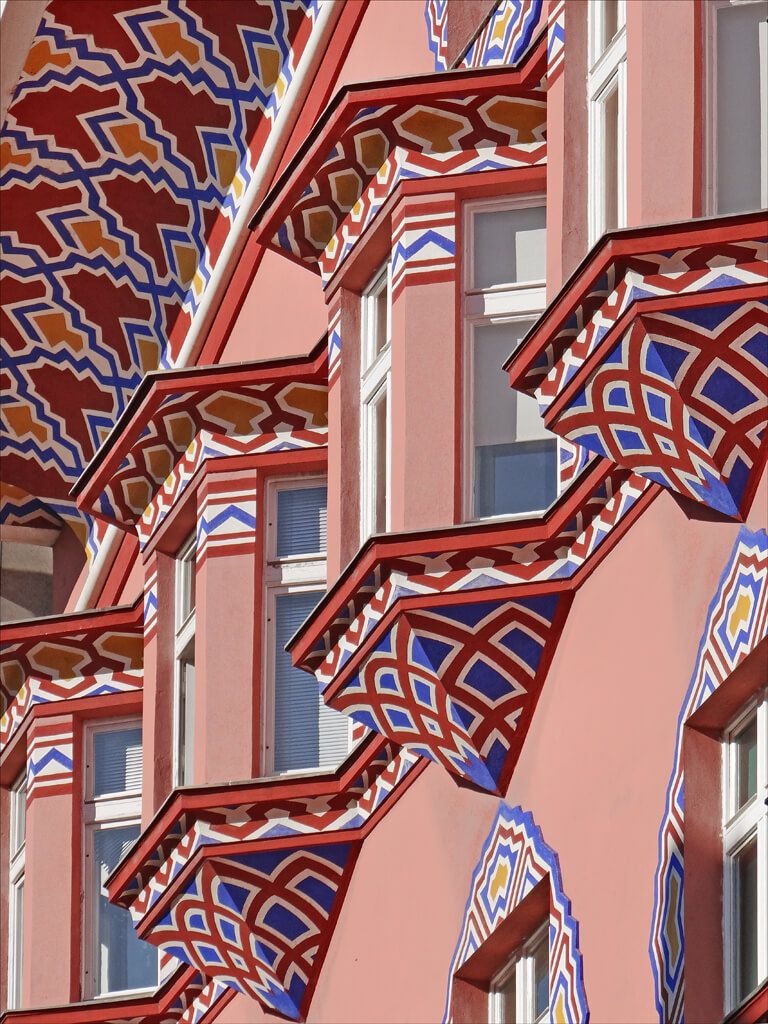
The Cooperative Business Bank Building on Miklošičeva. Flickr - Jean-Pierre Dalbéra CC-by-2.0
How things have changed
Do you know the Cooperative Business Bank Building on Miklošičeva? After the Second World War, during socialist times, people were like “come on, this is so ugly, all these decorative elements.” In the 50s, 60s, 70s, maybe even until the 90s, it was seen as nothing special. It was in bad repair and that kind of decoration was out of fashion. But after tourism developed it became one of the most notable and characteristic buildings. A building which is kept in our memory.
So it’s interesting how things change over time. When it was built it was important, and then for decades it was not, architects just didn’t like it.
It’s the same with Plečnik. It wasn’t until the big exhibition of his work, in 1986 in Paris, that he somehow came back to Ljubljana. It was a time of postmodernism, a boom in decoration, and that’s when he got rediscovered. You know, in the 60s and 70s people weren’t really taught about him at the Faculty of Architecture. I was there in the 80s, and we went to Paris to see that show and it was actually a surprise to see what he’d done.
Mali Nebotičnik
On his favourite building
My favourite in the city of Ljubljana is one just near here, on this street, Mali Nebotičnik (“Little Skyscraper” - see map here). It’s an example of modernist architecture, and in my opinion one of the best, from the 1930s. And not just here, but really in the world. In a way it’s so simple, but it fits the location perfectly and it’s got all typical modernist elements: curved lines as well balconies, railings, details and a sculpture by sculptor Tone Kralj. Modernism was known by adding sculptures on the façades. There are some other buildings like this in Ljubljana, such as at Argentinski Park, but this is the nicest. It’s not so well known, but it’s got really a lot of remarkable features, especially how it fits into the place, although the inside isn’t so special.

Postcard of Mali Nebotičnik (1930s? 40s?). Wikimedia, public domain
Because of its location, right in the centre, the people who bought apartments were rich, or artists. It was renovated just last year, and they did it very well, more or less the same colour as before, perhaps a little more vivid.
It wasn’t so out of fashion as Plečnik, because it isn’t so decorative, and in many ways not so different to socialist architecture, so aesthetically, ideologically, it didn’t have so many problems.
The lighting system for the store names is original, and really well done, with this style being common all over Europe in the 1930s, and even in Argentina, Buenos Aires. Curved balconies are very common, and the top floor is higher because there were studios inside.
If you look at the building next door, built by a German architect, I think, in around 1910, you can see how the architect of the Little Skyscraper (Herman Hus) understood the location, in urbanistic terms, and was able to integrate his work into the space.
If you look at this building here [see below], I think it was done in the 80s, and the architect tried to use some of the same elements, but it’s not as nice (although nothing is).
On Edvard Ravnikar
My late partner in this firm (Ravnikar – Potokar) was called Vojteh Ravnikar, but no relation to Edvard. In fact, the building we’re in now, part of the Ferantov vrt complex, is a Ravnikar, and I think it’s one of the nicest apartment buildings in Europe. Although these days it’s out of style, and people don’t really like the socialist architecture at the moment. That said, with the big MoMA exhibition of arhitecture in ex-Yugoslavia last year [Concrete Utopias], things are changing.
In some ways it’s less socialist and perhaps even “baroque”. These were quite prestigious apartments when they were built, with space for offices and stores at the bottom, a mixed use complex.
You can see how the shops come out of the floorplan, and this way gives more light to the apartments. If you look at the balconies they’re not at right angles, but diagonal, and this also gives more light and privacy. So the details are very well thought out, especially if you compare this to architecture that was done in Eastern Bloc at the same time, in the 1960s, it’s incredible, almost Scandinavian style.
Another very special thing about Ferantov vrt, which you can see from Slovenska cesta, is how Ravnikar somehow introduced the Roman form. Because here, underneath, there were the ruins of Emona – the Roman Forum. For example, there was a basilica, with an apse. So the architect decided to present this in the new structure, with this postmodern evocation of Ljubljana’s past.
There’s another detail, this column [see below, in a bad picture from Google Maps because there's nowhere to stand]. Originally the house where Plečnik was born was standing here. Of course, it was demolished, but then Ravnikar, a student of Plečnik, decided to put up this column in its place. So this column isn’t Ravnikar’s style, but it’s Plečnik’s.
Screenshot Google Maps
You can see some more of the buildings Robert and colleague have produced at his firm’s website, and if you’d like to ask about a private “walking workshop” to take you deeper into Ljubljana’s built environment, then you can email him at This email address is being protected from spambots. You need JavaScript enabled to view it.
April 23, 2019
Love brought Denise from Malta to Slovenia, which is now her second home and the new field of her gastronomic and oenological exploration. Denise recently decided to start a blog about her food and wine-tasting experiences in Slovenia, which also includes an overview of the upcoming events, information on active osmica’s and other informative insights. Interested to learn more, we got in touch and this is what she told us.
Where are you from, and what brought you here?
I’m from Malta, and happened to marry a Slovenian. We constantly travel between Malta and Slovenia, with Malta being our main base for now. I must admit, we do spend a good part of our year in Slovenia because there are so many new places to explore. We’ll see what the future holds.
What work did you do in Malta, and do you think there is a demand for it in Slovenia?
I’m a content writer by profession, and since I write in English I think I could come in useful to some people here.
What were your first impressions of Slovenia, and how do they compare with what you think now?
My first encounter with Slovenia was brief: I travelled through the country by train as I was on my way to Croatia from Trieste. This was back in 2002. At that moment I just knew I had to return. The natural landscape struck me as impressive, so green and different from what I’m used to back home in Malta.
That first impression hasn’t changed. On the contrary, the more I travel around Slovenia, the more I fall in love with its natural wonders and beautiful scenery, and can confirm that I was so right about my initial feeling about the country.
My true love affair with Slovenia began in 2013 when I first visited my (now) husband.
What has been your experience of culture shock in Slovenia?
I haven’t experienced much culture shock. The main difference is the language, which I’ll get into later, and the rather high alcohol consumption among the ageing population. Something I find funny: Some people keep calendars featuring naked women in their garages or workshops. Can you imagine how awkward I felt one day when trying to speak to my husband’s grandma who was standing right in front of a picture of this lady baring her all?
What’s your blog, and how long have you been running it?
I launched my blog Wine Dine Slovenia about a month ago now.
Why did you set it up, and can you explain why you chose food and wine as the focus?
I set up Wine Dine Slovenia to express my passion and fascination with the diversity of Slovenia’s gastronomy, in the knowledge that I’ll also learn more about Slovenian culture and way of life as I go along with developing it. I love to enjoy my food, as you’ll see through my posts, savouring every bite as I chew and every sip as I discover a new wine.
Slovenia has such a large number of successful winemakers who are extremely passionate about what they do. You can see that they put their heart and soul into their vines and wines. Some winemakers take that extra step by letting their spirit run wild, to be daring and come up with something innovative. It’s only recently that the high-quality level of Slovenia’s wines is becoming more internationally appreciated. So I’d like to contribute to spreading the word and get more and more people outside of Slovenia, and within it, to appreciate what the country has to offer in terms of wine as well as food.
What can people learn on your blog?
Through part of my blog I aim to present the genuine and typical food and drink that is served in relatively unknown parts of Slovenia, such as undiscovered or out-of-the-way farm-stays or ‘turistične kmetije’ as they’re known here in Slovenia. You also have the ‘osmice’ that are held twice yearly (spring and autumn) in the western region of Slovenia (Primorska) during which farms offer their home-made produce, such as cured meats, bread, cheeses, olive oil, sausages, stews, štruklji, fruit juices, wines, and liqueurs.
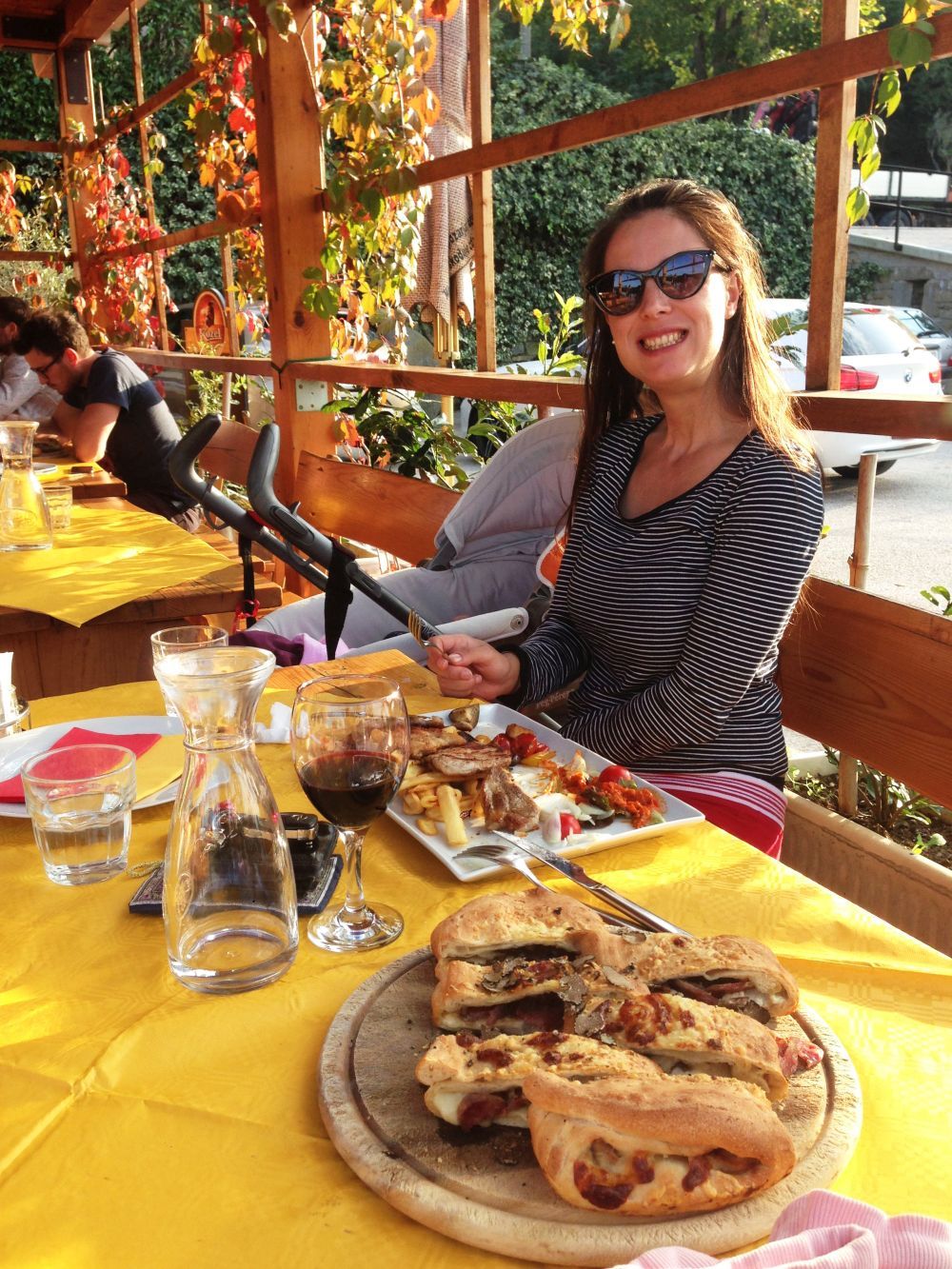
What are your plans for your blog as it develops?
The blog is still very new, but I will work to make it more comprehensive so that it will be a reference point for those who want to know all about what’s happening in the food and wine scene in Slovenia. I eventually want to include a complete list of wine and culinary events taking place all over the country.
Where can people find out more about your work?
You’re very welcome to visit my blog: Wine Dine Slovenia and follow me on social media: Facebook, Instagram, and Twitter. I will greatly appreciate your support! Feel free to leave your comments on the blog itself and even on my social media pages.
What are some things from Slovenia that you think Malta could benefit from?
Definitely sustainable tourism and sustainable development.
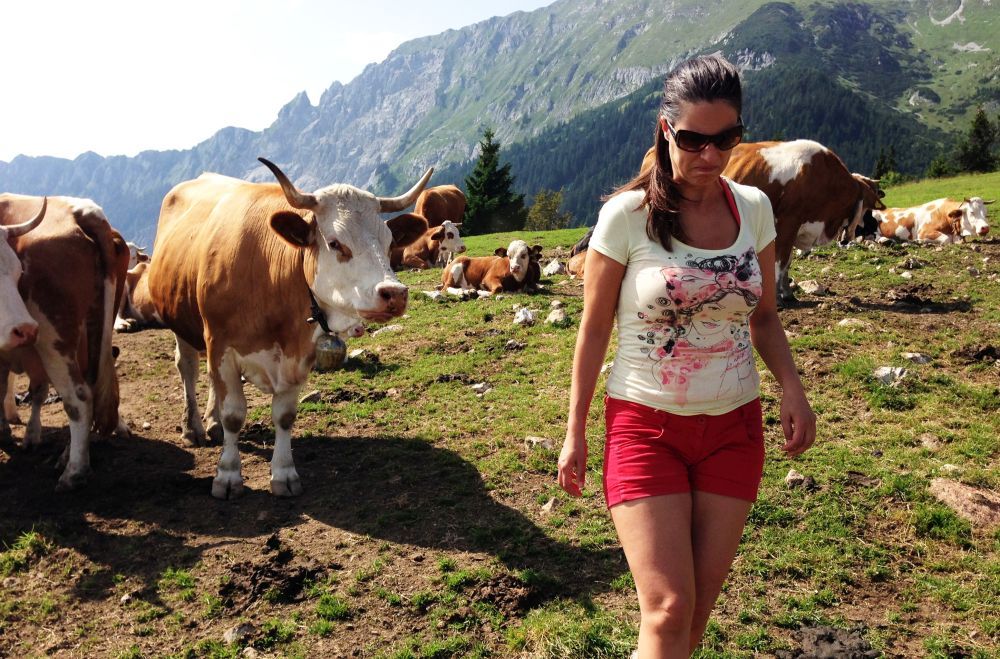
And what are some things from Malta that you think Slovenia could benefit from?
More smiles on people’s faces when I approach them for assistance, for example at the shops. Some locals, in Ljubljana mostly, don’t come across as too friendly.
Have you started to learn Slovene?
I’d never had the opportunity to be so frequently exposed to the language before I met my husband. The Slovenian language is nowhere near the languages I’ve been accustomed to hearing or using, which are English, Maltese, French, and Italian. Yes, Slovene has a few Italian words thrown in, but it still sounds completely foreign to me. However, I love a good challenge. I know that Slovene is extremely difficult to master, especially because of all the cases or ‘skloni’ that it has, but I’m on a mission to learn it well enough so that I can at least understand it, if not hold a decent conversation.
What methods are you using to learn it?
My in-laws are certainly helping me to increase my range of vocabulary (I have no option but to speak Slovene to certain members of my husband’s family), and I also find the freely accessible Slovene Learning Online course slonline.si fun, engaging and extremely useful.
Where are some of your favourite places to visit here?
My favourite region is Primorska—the food there is not as rich or heavy and as in other parts of Slovenia. And I can also almost smell the salty, herb-infused Mediterranean air! The Slovenian coast is rather pretty with the Venetian-style streets and architecture. I have an endless list of places that I fell in love with in Slovenia, but I’ll try mention a few that are closest to my heart: the Goriska Brda wine region; Slovenian Istria particularly Izola, Marezige and the romantic view from the wine fountain, and Strunjan; Jeruzalem in eastern Slovenia; Triglav National Park and the mountain town of Bovec; Tolmin, and Most na Soči.
What things frustrate you about life in Slovenia?
Skloni
What things delight you?
Food: veal stew, deer goulash, juicy Vipava struklji, potica... and wine: particularly a delicious blend of Merlot, Cabernet Sauvignon, with the addition of sweet wine from dried grapes!
Do you think you’ll stay in Slovenia for the rest of your life?
What I know for sure is that I’ll be spending more and more time here in Slovenia than anywhere else.
Would you advise a friend to move to Slovenia?
I would recommend it, especially if they like hiking, pure nature, a wide variety of foods, and great wines.
What are some places you recommend
I’ll be writing about various eateries that I’ve taken a fancy to in my blog, but there are some unforgettable hiking trails: to the top of Rašica hill from where you can admire views of Ljubljana and the surrounding areas and where Planinski dom Rašiške čete na Rašici serves up some delicious mountain hut food, Sveti Jošt nad Kranjem with its delightful Dom na Joštu, Tolmin gorge, Soteska Pekel (Hell Gorge) where you can even see Devil’s tooth!

You can keep up with Denise as she continues to explore and write about Slovenia at Wine Dine Slovenia, and if you’d like to share your story with our readers, please get in touch at This email address is being protected from spambots. You need JavaScript enabled to view it..
We recently became aware of an interesting new project, Marnie’s House, being organised by Saira and Will Aspinall, who traded their lives in London for rural Slovenia. Curious to learn more about both the project and their reasons for pursuing it, we sent along some questions and Saira was kind enough to reply….
Where did you live before Slovenia, and what brought you here?
We lived in a small flat in Brixton, South London. We met in a rowdy reggae bar there, fell in love and had two beautiful children, but we wanted fresh adventures. A holiday by Lake Bled for Will’s 40th birthday in April 2018 presented the contrast and the opportunity we were after. Fresh air and mountains as opposed to crowds and the worst air pollution in Europe! We put our house on the market as soon as we got back from that holiday to Slovenia and looked back since.
What’s the idea behind Marnie’s House?
The idea is to create a luxury bed and breakfast especially for family travellers to Slovenia. As parents of two young children, we’ve had so many experiences of staying in hotels where it just didn’t feel like our children were catered for. Our aim is to offer families a chance to spend quality time together in beautiful surroundings, with a touch of English country house glamour and none of the stress sometimes caused by family travel. We’ll have a strong focus on sustainable tourism and green living, and will definitely be encouraging visitors to explore in nature as much as possible. A stay at Marnie’s House should feel like you’re staying with good friends who are just unusually good hosts.
How did you find the property?
We used Slovenian Property Development - a full-service estate agency, construction and development company based in Bohinj and Ljubljana. We saw the farmhouse for the first time in an online listing and instantly fell for it. The agency showed us several other houses, but secretly Will and I both knew we would end up buying this one.
How much renovation does it need, and what’s been your experience working with builders, and so on?
The original sales listing for the house said it hadn’t been renovated for “quite a long time.” In truth, some parts of the house date to 1500 and it hasn’t been inhabited for almost 40 years. So the renovation is daunting, as almost everything needs to be done, but so far our experience of working with architects and developers here has been very positive. We’re only just approaching the planning permission stage though, so have been warned there may be frustrations ahead!
What has been your experience of starting a business here?
So far, relatively painless. We were lucky as Slovenia Property Development helped us with registering the business and opening bank accounts etc when we were still based in London. There were a few humorous moments - signing a power of attorney which was entirely written in Slovene before we had any knowledge of the language was a little nerve-wracking. We’ve found that the banks and professional services here are a bit less flexible than in the UK, and perhaps not as used to the idea of small business entrepreneurs, but nothing is impossible.
When will the property be open for business?
We hope to be open for business sometime in 2020. As well as offering bed and breakfast, the house will be available for full-service private hire, parties and events. We have also just launched ‘Events at Marnie’s House’. Starting this summer, we will be running interactive workshops, guided walks, art classes and performances in our forest grounds. Our first events will be a series of foraging workshops, hosted by Katja Rebolj, a wonderful contact we have made here who is an expert in wild and edible flowers. Katja supplies foraged plants to lots of the top restaurants and bakeries in Ljubljana and she is going to share all her incredible knowledge during our workshop and foraging walk. All the events we host will be designed to inspire a greater connection with the natural world.
We are also renovating an awesome 1980s Adria caravan into a mobile bar (with Slovenian craft beer and Italian Prosecco on tap), which will soon be available for hire at weddings and parties, and will be adding some sparkle to a local campsite this summer.
What are some things from Slovenia that you think the UK could benefit from?
EU membership, to name one thing! We’re also very grateful for vrtec (kindergartens). In the UK the most basic pre-school care costs a fortune, often taking the entire income of one parent. That’s a bad start to life, and a huge stress on young British families.
The British countryside is beautiful but we’ve never seen so many wild flowers and butterflies as here in Slovenia. I’m not sure where they’ve gone in England but it would be nice to see them back again.
And what are some thing from your home country that you think Slovenia could benefit from?
Nothing beats a takeaway curry - poppadoms, onion bhajis, etc. We were very excited the first time we spotted mango chutney in Radovljica Spar.
Have you started to learn Slovene?
We knew that although many Slovenes are proficient English speakers we were never going to understand Slovenian culture or be fully accepted unless we tried to learn the language. We were recommended a teacher for private lessons and started as soon as we arrived. Kristina’s fantastic, conscientious, creative and very, very patient! A few months on and we’re still learning slowly but people are very forgiving and appreciate the effort. Počasi se daleč pride.
Will’s happy to throw himself into awkward situations, especially as we begin to meet business connections around the area. I’m much better at understanding what people are saying, but being a perfectionist I don’t like to be wrong and often let him make the mistakes.
Some of our neighbours don’t speak English at all and we are thankful that they persist in trying to hold conversations with us on a daily basis. Sometimes, we even understand them.
We are not very good at ‘studying’ and our grammar sheets often languish untouched, so immersion has been our most trusted technique for learning the language so far.
How do you feel about Slovenian food and drink?
We decided to become vegetarians for environmental reasons in early 2018. Despite the abundance of fresh vegetables and fruit the menus here are a bit of a challenge when you are looking for dishes ‘brez mesa’. But the food we have eaten has been of an exceptional standard - especially in some of the gostilna in Radovljica and at Vila Podvin. Will tried klobasa and nearly had to become a meat eater again!
We love the seasonality of food in Slovenia - mushrooms, pumpkin and chestnuts in autumn for instance. Seeing people with baskets foraging for food is a world away from shrink-wrapped ready meals in London.
It was a huge surprise that Slovenia has a thriving and ancient history of wine production, and we’ve become avid consumers of Refosk and Malvazija. Will comes from Somerset in England, a county famous for its ciders. Given the quality of the apples, he’s surprised that there’s no decent cider in Slovenia but plans to change that soon…
What things frustrate you about life in Slovenia?
Our main frustration is with ourselves and our slow progress with the Slovene language, but we know (hope) that will change in time. A few more bars showing rugby matches would be welcome too...
What things delight you?
Turning the tap and drinking the finest tasting water in the world; discovering močerad on rainy walks; how the ‘busiest’ spots in Slovenia will never match the queue for the 59 bus on Brixton Hill; the fact our children don’t want to leave vrtec to come home, the amount of carnivals, celebrations and national days we have enjoyed in just six short months living here, the talented craftspeople we have met whilst sourcing things for our caravan and house renovations.
Do you think you’ll stay in Slovenia for the rest of your life?
At the moment we plan to stay for 15 years or so, but I already feel like that isn’t long enough! Where we live now, we are surrounded by small farms and I love the idea of one day having one of our own. Perhaps when the children have left home... we can replace them with goats…
Where are some of your favourite places to visit here?
There are so many. We brought our dog with us when we moved, so we love a long walk in our area - along the white and blue waters of the Sava, or up in the forests above Radovljica. We are big fans of Pusti Grad (Lipnica Castle), and it makes us feel better about the relative disrepair of our house!
Our favourite family walk is the Grabnarca Waterside Nature Trail in the Lipnica Valley. It has everything: a babbling stream, a beautiful forest, a small lake and then an incredible reveal as you climb the valley and come out into rolling fields. I defy anyone not to break into ‘the hills are alive with the sound of music…’ at this point. One snowy day in December we followed deer tracks along the whole trail and drank hot chocolate on a small bridge above the frozen stream, which was about as magical as it gets.
We love Public Bar and Kitchen in Lake Bled - the menu is entirely vegan and the burgers and service are exceptional. Great for supper after a brisk walk or swim around the lake!
For a fun place to stay in the summer, you can’t beat the Eco River Camp right on the River Sava.
Finally, where can people follow the Marnie’s House Project?
Take a look at our website www.marnieshouse.si and sign up for our newsletter or keep up to date on our events, follow us on instagram @slovenianfamilyaspinall, or check out Will’s films about our life in Slovenia on YouTube.
If you'd like to share your Slovenian story with our readers, please get in touch with me at This email address is being protected from spambots. You need JavaScript enabled to view it.
As part of getting to know more about the work of SILA we found out that their 2019 Spring Soirée would be benefitting Europa Donna, a Europe-wide organisation that works on behalf of women with breast cancer, as well raising awareness of the importance of screening. What’s more, one of the speakers at the event would be the group’s president in Slovenia, Tanja Španić, a doctor of veterinary medicine with a PhD in molecular and behavioural neuroscience. Curious to learn more, we got in touch with Dr Španić, who was kind enough to answer our questions.

How long have you been working with Europa Donna, and how did you get involved?
I have been active with Europa Donna (ED) since 2010. I was diagnosed with breast cancer in 2008, when I was 26 years old and at the beginning of my PhD in biomedicine. I went through different kinds of treatment, and after the primary treatment was finished I went to rehabilitation where I met other women with the same experience, who told me about Europa Donna and their section for young patients. So I decided to join them. Soon, I became the head of the group of young women with breast cancer, then secretary general and in 2017 president of ED Slovenia. Meanwhile I’ve finished my PhD and another research project. Combining both jobs was impossible, so at some point I had to choose. I decided for Europa Donna.
What’s the aim of Europa Donna, and what work does it do to achieve this?
Europa Donna Slovenia has been a member of The European Breast Cancer coalition Europa Donna since 1997. The European Coalition has 47 member countries. Together, we create advocacy initiatives in support of the 10 goals of Europa Donna and thus improve the lives of women with breast cancer. In Europa Donna Slovenia we connect the healthy population, cancer patients, individuals, experts and institutions.
The main goal of our association is to provide equal opportunities and access for all breast cancer patients in Slovenia in order for them to have access to screening, early diagnosis, immediate and effective medical treatment with rehabilitation. With our experience, we developed different kinds of support, financial, legal and psychosocial, for patients and survivors. We provide this through specific sections, workshops, meetings and groups. Over the past two years, we started with an active program to support relatives and children on this path with cancer. All psychosocial support is grouped in the ROZA program (www.europadonna-zdruzenje.si/kdo_smo/program_roza). For the broader public, we are mostly known for our awareness campaigns during Pink October activities like lectures, stands, walks and runs, exhibitions around Slovenia.
What are some of the systemic and social challenges that women with cancer face in Slovenia?
First, you have to face with the stigma of being diagnosed as a cancer patient. If you successfully finish the treatment, you come to a stage where you have to face other obstacles like going back to work, part-time retirement, lower income, how to change jobs, not to mention dealing with the late and long-term side effects of the treatment. Usually, these treatments are very aggressive and long, with quite a lot of consequences like fatigue, big and stiff scars, lymphedema. A healthy person never thinks about the consequences of the treatment like that. And lots of cancer patients face misunderstandings from their employer, because you look OK but in fact you are not. In collaboration with other cancer patient organisations we are very active in talking about the issues and social challenges that we face after treatment.
How can people get involved?
We make quite a lot of effort to provide most of the programs free of charge for users or with a very low contribution. Anyone can become a member of Europa Donna Slovenia and help with membership or a part of their personal income tax (dohodnina). Anyone can become our donor or supporter on a monthly basis.
You can learn more about Europa Donna in Slovenia here, or on follow the group on Facebook, while you can read about its work all over Europe, and in English, here.
You’re from Hong Kong – how did you end up in Slovenia?
I was hired before I came to Slovenia as a Traditional Chinese medicine expert a few years ago. Back then I was a bit exhausted with the busy and crowded environment in Hong Kong, so I was looking for a change. Indeed, it was the internet that found Slovenia for me after intensive browsing and Google searching. I visited Slovenia for one week before I took the job and that was the first time I came to Europe. It is, however, my personal choice to stay in Novo mesto, a relatively quiet and small "city".
In 2017, I had a major change in my job. At that time, I needed to choose whether I stay here or restart in other city. I even got another job offer in Koper. But somehow I feel responsible to all my clients who have been visiting me for years, and I would like to continue to serve them. So despite some good business opportunities offers, I chose to settle in Novo mesto.
What were some of the problems you faced when moving here, and how did you deal with them?
Frankly speaking, at first, not many problems because I was hired as an expert, so basically someone took care everything for me – renting an apartment, arranging job, even taking me to the government office and bank with a person who speaks Slovene. But then, slowly, the longer I lived here the more problems I had.
The first challenge I had was getting my driving licence. It took my more than a year, even with the effort of my Slovenian driving instructor, and yet I was not able to satisfy the ever-changing and never-ending request for paperwork from the Upravna Enota. At a certain point I just realised that he was asking for documents that didn’t exist. And every time when I wanted to get some clear answers, instead of giving me one, the guy just tried to think of something to send me away. So I took the advice from the expat group online, tried another Upravna Enota, and guess what? I finally took the practical exam, passed and got my license. I was not so lucky the next time with my visa renewal though, and I really do not want to get into the details.
But you know, similar stuff like that, they never tell you the things once and for all, so the whole procedure is dragging on for so long and at the same time the officers are complaining that they have so many jobs to do. For a person who comes from a city that is world famous for its efficiency, this is unbelievable and almost hilarious. Interestingly enough, sometimes this could happen in private companies as well, but at least I can choose another bank and telecom and live with it.
What are some things you miss from Hong Kong?
As mentioned above, our efficiency, maybe some more pragmatism as well. The government and companies in Hong Kong are (or maybe were) famous for high efficiency and quality. This is very understandable. For a small city with seven million people and as one of the largest financial centres in the world, everything needs to be fast, precise, no-nonsense. And for the previous generation of the Chinese community, they also needed to face rule under the British. They needed to find their space to keep their own Chinese heritage and customs, but at the same time adapt to the British.
The British were also quite clever, especially after the late 60s, when they finally realised that instead of just taking and taking, as they did in other colonies, they also needed to build and develop the city as a modern society. So for my generation who grew up in the 80s and 90s, we kind of have the best of both worlds. I was able to learn from my Chinese heritage for our hardworking and can-do attitude, respect for tradition and authentic Chinese culture while at the same time I am familiar with the practice of the rule of law, have communication with the free world and enjoy our economic success.
And of course, the variety of food from home is also what I miss. It is not just about having Chinese food. It is the variety of fresh vegetables, seafood and all kind of imported food from all over the world. I do enjoy the quality of food in Slovenia, but I do want to have more vegetables than lettuce, spinach, broccoli and stuff like this.
What things do you think Slovenia could learn from Hong Kong?
In some ways, I think Slovenians are too comfortable or even obsessed with being a small country. Look – being geographically small does not mean that you cannot think big. Sometimes you really need to break through the comfort zone and explore. And in this process, there will be pain and difficulty but you need to have a long term plan and bigger picture in mind together with a good faith. However, the Slovenians that I have met are either too passive and pessimistic for advancement, or they react aggressively protective of their own rule, despite the fact that those rules are causing more trouble or are impractical in the real world. So in short, what Slovenia can learn from Hong Kong is more of our can-do attitude, with more flexibility and pragmatism.
What things in Slovenia would you like to show people in Hong Kong?
I do not want to show them anything because I want this country to remain a hidden gem (laughs). Just kidding. Well, to be honest, it is a difficult question to answer. I enjoy the relatively slow and quiet pace of the country but if I tell everybody about this then I am kind of ruining the peace. Slovenia has everything, but just a tiny bit of everything. And for people in Hong Kong, we are so internationalised. We travel a lot. So if they want the European heritage, they go Vienna or Florence; if they want to the city vibe they go to Berlin or London; if they want the nature or beauty, they go to Switzerland or Iceland. In the recent years, more Hong Kong people are interested in visiting the Balkans or somewhere with less people. This is the only time when people from Hong Kong will look for Slovenia, and then have trouble pronouncing Ljubljana.
Do you speak Slovene, and if so, how did you learn?
I took some private classes when I was an employee. But ever since I started my own business, I do not have the time and energy for more lessons. At work, I can understand many familiar phrases or vocabulary items related to my work. I have a translator and interpreter for my business. For my personal life, I mostly speak English. For some occasions I just hire a personal assistant or consultant for complicated or formal things. In general, my Slovene is slabo.
What’s the situation of Traditional Chinese medicine (TCM) in Slovenia?
Just like many other things in this country, Slovenia has everything but on a small scale. The first TCM expert was invited by the former Yugoslavia. Somehow that doctor settled in Slovenia, and since then more experts like me were hired to come here. Still, doctors come and go, while TCM here is kind of controlled by the business owner, so the TCM profession is way less mature than places like Canada, USA, Australia and Switzerland.
At the same time, Slovenia is also in a difficult position with regard to training their own TCM doctors. There are acupuncture services in the hospital and there are medical doctors who perform acupuncture. But if we consider the more internationalised and widely accepted standard of training, the formal training of TCM is basically non-existent in Slovenia. Slovenians can go overseas for formal training, but it requires a huge investment. Therefore, importing TCM experts and training capable interpreters for non-Slovene speaking doctors is a more practical and cost-efficient way of providing authentic and quality TCM services in Slovenia. To a certain degree, we are quietly assisting the overloaded medical system herem while generating profit for the government and creating jobs.
What are some things that people get wrong about acupuncture?
Acupuncture is not just poking needles into the body. There are different types of acupuncture. The one that I am practicing is the classical Chinese approach which is under the Traditional Chinese medicine theory and system. Other Asian medicines like Korean and Japanese ones are similar to the Chinese, but still have their uniqueness. There are some “modern” forms of acupuncture, to be accurate “dry-needling”. They are not performed under the TCM theory, but using scientific and anatomical knowledge like trigger points or the nervous system.
As I have mentioned, acupuncture is not just putting needles into the body. There is a reason behind it. However, after hundreds of years of reductionist science, many people refuse to accept the fact that there is another rational and logical approach to understanding our body. TCM is a holistic philosophy which is a complete and sophisticated system, but at the same time fundamentally different from science. We may be able to get some scientific findings in TCM, but again they are only small pieces under a reductionist system. Anyhow, I don’t want to bore people with too much academic talk, but instead to emphasise the value and importance of an independent and mature TCM theory.
What are some things that acupuncture can help with?
Throughout my years in Slovenia, I have helped many people. Some conditions that I find more responsive to my treatment are digestive system problems like irritable bowels, thyroid problems and psychiatric problems like depression and anxiety. The list is too long, really, to name just a few.
Do you think you’ll stay in Slovenia “forever”?
I do have some plans on the personal, business and professional levels. But who knows what tomorrow might bring. I will try and do my best to provide and serve my clients as well as Slovenian society. May the people here will help me, value me and God bless me.
If you’re interested in learning more about Ms Cheng’s work in Slovenia, then you can visit Aku Energija online or at Ulica talcev 9, 8000 Novo Mesto
March 9, 2019
Human history is a story of migration, and Slovenes are no exception.
In the last century and a half many Slovenes emigrated to various New Worlds, especially North America, with the diaspora finding new homes far from the land of their birth. As such, over time and with each generation their hometowns became more and more distant, until their descendants lost touch with their roots.
As such, tor many who would like to reconnect with their family origins and explore their roots a little, or a lot, of help is often needed. And this is where Urban Gulič Tomšič comes in.
Urban, what exactly do you do?
I am an ancestry guide, sometimes I also call myself an ancestry detective as my job involves a lot of investigative work.
Say I was a USA citizen who had just discovered I had some Slovenian roots and would like to learn more. How could you help me?
My help would almost certainly begin with an exchange of emails. You would need to give me all the information you’ve got so that I can have some grounds on what or who we are looking for. I advise clients about the time they might need in Slovenia, locations to stay and visit, and information to help them travel hassle free to Slovenia. However, my actual services begin with data-gathering and investigation, be it on my own or together with my clients.
We begin with gathering the information in your country, in the example of someone in the US one of the resources is Ellis Island records of immigrants, and then proceed with our work in Slovenia. In many cases the names of towns and villages are in German and also in various fonts, such as Gothic script. It happens as well that five or more villages of the same name emerge while looking for a person’s place of origin. I clarify all this and prepare the grounds for our common investigation.
The next step is to go and visit the related archives. I sometimes do this task on my own in case my clients don’t have enough time for a long enough visit.
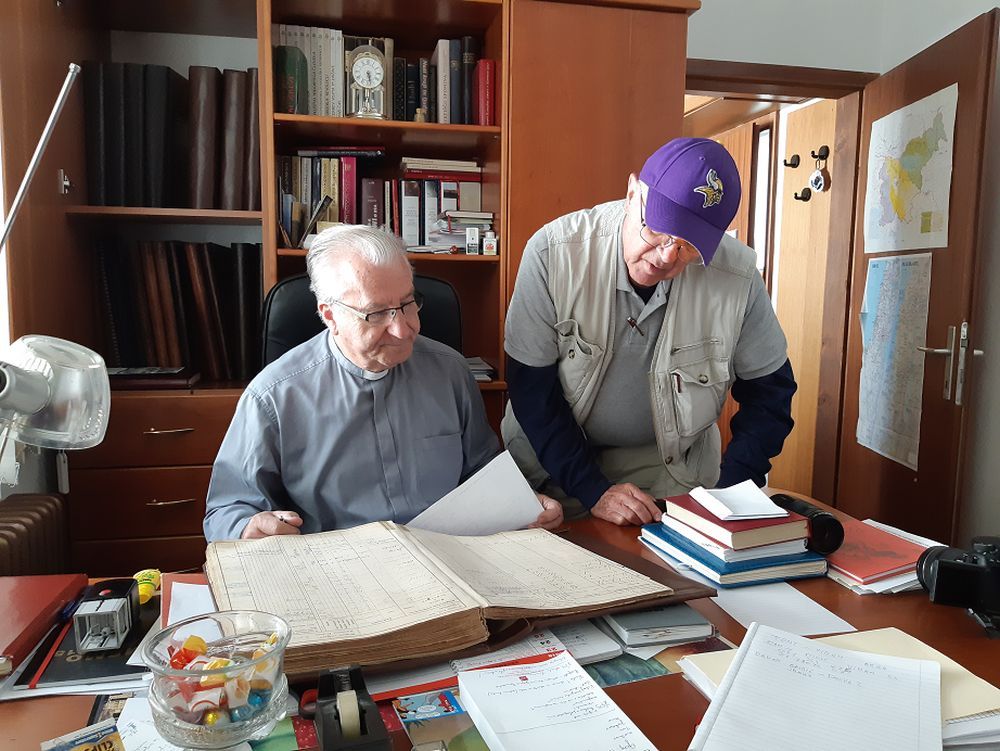
Equipped with this data we then go on our trip around Slovenia. We visit local parishes and check their archives as well, old cemeteries, we knock on people doors and pieces of information start to come together.

Most of the times we meet living relatives, find old houses or their ruins, even neighbours in possession of old photos and oral history.
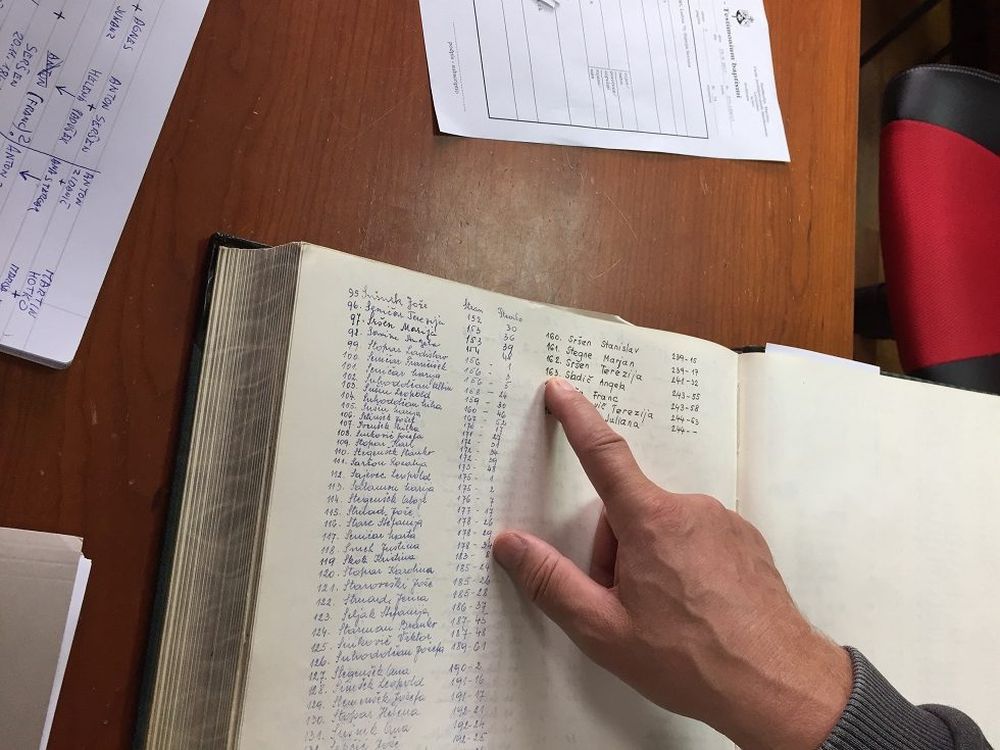
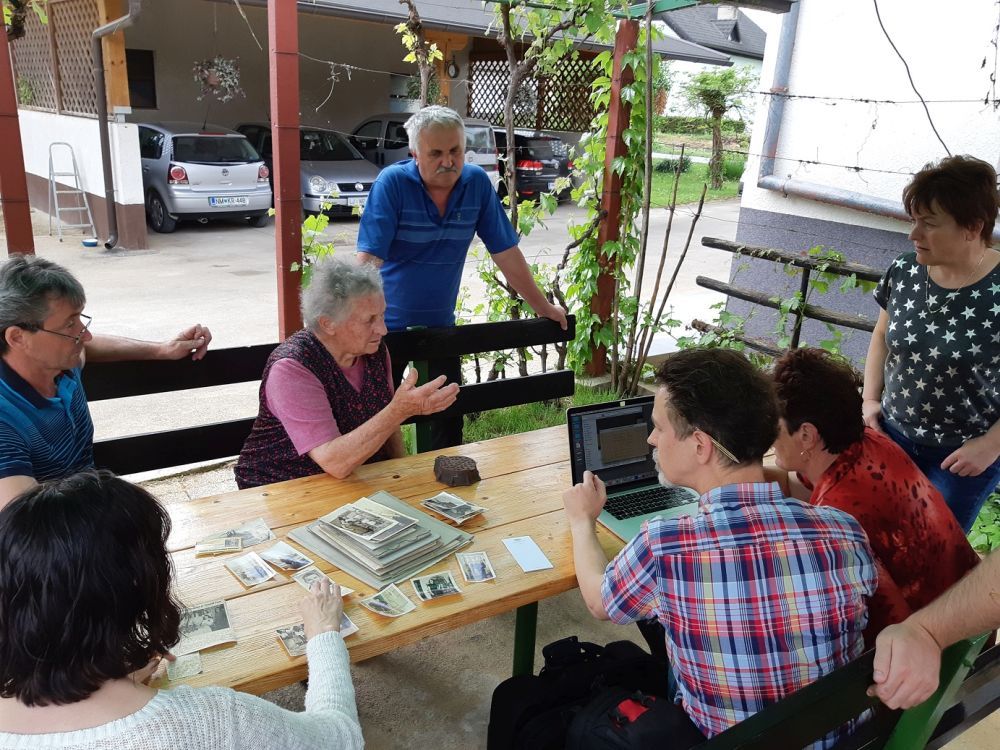
Photo: Ancestry Slovenia
How come you decided to do this?
My friend and a fellow tour guide Barbara once called me to help with ancestry guiding, because one of hers colleagues got sick. I took the tour and got immediately hooked. I enjoyed the company of my clients but also the research, it made me feel like Sherlock Holmes. I also felt very happy when we found what we were looking for. I wanted to do more of this so I launched my own Slovenian Genealogy website.
Where do your clients mostly come from?
Most of my clients come from the USA, mainly Cleveland and Chicago, as well as California, but I get people from everywhere Slovenians moved long enough ago for their descendants to have lost touch with the old country.
Which part of Slovenia do your clients mostly originate from, is there a region that stands out in this respect?
Many people emigrated from the areas of Posavje and Dolenjska (Lower Carniola), as the living conditions at the end of 19th century were really bad in these areas. In general the majority of my research is conducted in the eastern part of Slovenia.
My clients are mostly descendants of this first wave of emigration (roughly between the years 1880 and 1920), which was predominantly economic in nature. Those who emigrated for political reasons following the end of WWII mostly haven’t lost a touch yet, as this wasn’t that long ago.
As a tour guide, what are the places you would recommend to visit in Slovenia besides the usual destinations of Bled, Ljubljana Castle and Postojna Cave?
Basically in Slovenia whether you head in one direction or another you can stumble upon a place of beauty: Soča Valley, the lovely city of Piran on the coast, the wine region of Goriška brda, Lake Bohinj, Velika Planina, the Mercury mine of Idrija and Škocjan Caves, to name just a few.
Urban, thank you for talking to us.
For more information please visit Ancestry Slovenia.
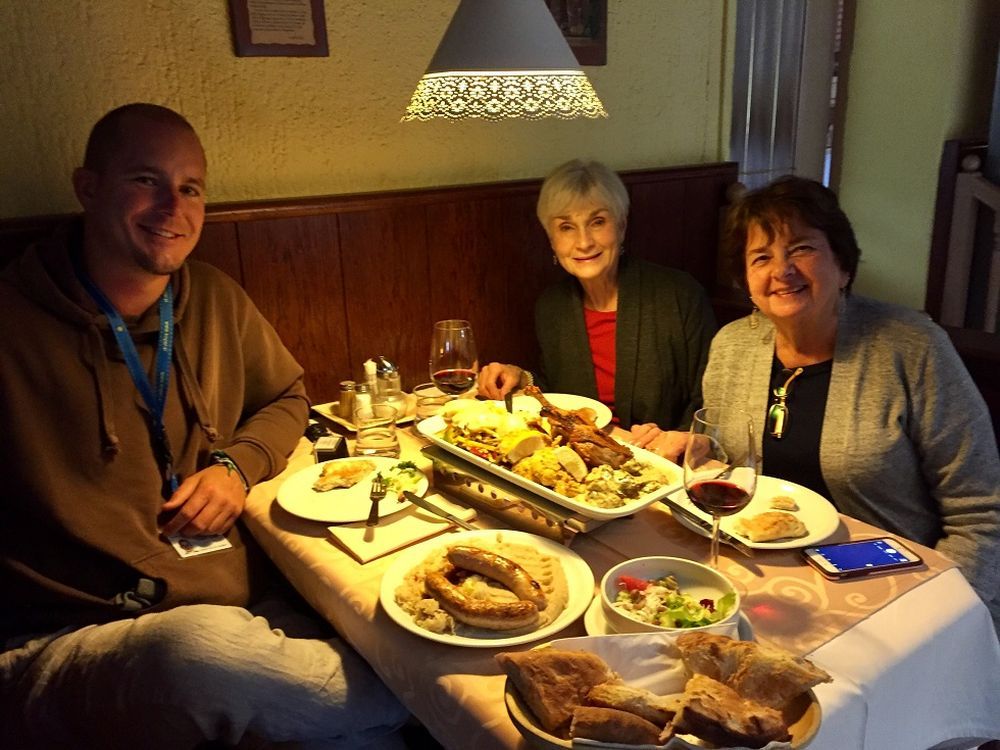
Related: How Braziian fever led many Slovenes to South America
To an entire generation of Slovenes, the name Angela Vode would have meant nothing. Even today bringing up the name of Ms Vode in the company of Slovenes may result only in confused stares and faces of disinterest, confused as to why you interrupted their coffee to talk about some dead woman from the past. But Angela Vode isn’t just some dead woman from the past, far from it. Angela Vode was one of those unfortunate souls who gave their entire life over to helping their fellow humans only to be consistently arrested because of it. Her life story isn’t a million miles away from mirroring Slovenia’s own in modern times.
Angela Vode was born on January 5, 1892, the third daughter of five children in a poor, working-class family. Her father was a chap by the name of Anton, who worked as a railwayman until his death in 1904. Little is known of her mother, other than the fact she passed away in 1919. Angela’s upbringing was fairly typical of a working-class Slovene girl in the Austro-Hungarian Empire at the time, which means her future job prospects were ‘teacher’ or ‘wife’, or maybe even ‘wife of teacher’. ‘Wife and teacher’ legitimately wasn’t an option, unless it was ‘teacher and wife of teacher’. Married women were forced (by law) to give up their jobs unless they were teachers marrying teachers.
This is the societal system that Angela Vode was born into, and therefore you can understand why she was just a little bit miffed about it all. Angela graduated from a teaching school in 1911 and worked as a teacher in and around Ljubljana all the way up until 1917 when she was fired because of her ties to a youth movement known as Preporod (Rebirth), who were openly anti-Austria and all in favour of a future Yugoslav state. Despite being considered a ‘red feminist’ Angela continued on the educational path post-firing, studying special education in Prague, Berlin and Vienna before returning to Slovenia to work as what was then called a ‘teacher-defectologist’, which basically means ‘teacher of children with disabilities’. Angela actually published a number of articles on the education of disabled children, as well as a book in 1936 titled ‘The Importance of Auxiliary Schools and Their Development in Yugoslavia’. Well, it was called ‘Pomem pomožnega šolstva in njegov razvoj v Jugoslaviji’, to be precise.
The education of disabled children wasn’t Angela’s numero one focus however, no matter how forward thinking she was on the matter. The 1920s saw Angela Vode fast become one of the most vocal supporters of women’s rights in what was first the Kingdom of Serbs, Croats and Slovenes and then the Kingdom of Yugoslavia (from 1929). The history of women’s rights organisations in Slovenia was not a long one, the first such organisation being established in the city of Trieste (now in Italy) in 1887. Angela was elected president of the Women’s Movement of Yugoslavia, as well as president of the Female Teachers’ Society of Slovenia (established in 1898), which carried the slogan ‘for equal work, equal pay’. The mid-1930s saw her publish a number of works on the subject of women’s rights and social injustice, although the events of the 1940s in Yugoslavia meant these books would cease to exist until after Yugoslavia had itself ceased to exist.
Again we must travel back ever so slightly. In 1922 Angela joined the then-illegal Communist Party of Yugoslavia, in what she described as an act of idealism born out of a sincere belief in the fight against injustice. She stuck with the party until 1939, when she was expelled for openly criticising the Molotov-Ribbentrop Pact that saw Hitler and Stalin agree to carve up Eastern Europe. World War Two soon came to the Yugoslav lands, and despite her frequent warnings about the importance of a united anti-fascist front, the resistance in Yugoslavia split into many parts. Despite her expulsion Vode decided to join the commie-led Liberation Front of the Slovene People, quickly becoming the top representative of the Slovene women’s movements. In late 1941 Vode joined Stara Pravda (Old Justice), but the expulsion of this group a year later signalled misery on Angela’s horizons.
She continued to do her bit to help the resistance however, organising collections of food and clothing for Slovene refugees and those in labour camps. How one gets food and clothing into a fascist labour camp I have no idea, but I digress. Vode was in Italian-occupied Ljubljana at the time, and whilst this wasn’t the greatest place in the world it was simply heaven compared to the existence of the Slovenes in the Nazi-occupied areas of the country. This led to a whole heap of Slovene refugees moving into Ljubljana, and in late 1942 the Italian authorities decided the best way to deal with this was to start executing whomever it deemed unnecessary. Like any human with a heart, Vode decided to appeal to Italian leader Benito Mussolini to stop the executions, but her protest was destroyed by the Slovene communists who wanted to be the sole source of protest and resistance in order to enhance their claim to power when the war was over.
The war was soon over (well, a couple of years or so later anyway) and things didn’t look too rosy for Angela. She went back to working as a teacher, but as the communist stranglehold on power increased her future looked increasingly bleak. The fact that she was one of the few who tried to organise legitimate political opposition to the communists didn’t help, and her standing as an intellectual on the other side of the fence all but guaranteed her a visit from the secret police. That visit came in the autumn of 1947, and Angela was arrested and imprisoned for two months. After two months of torture and abuse, Angela Vode was put on trial, by which I mean after two months of torture and abuse Angela Vode took part in a show trial. She was charged with treason, accused of being an enemy of the working class, a western spy and any other stereotypically 1940’s communist thing one could be arrested for. These were the Nagode Trials, named after the leader of the aforementioned Stara Pravda movement, Črtomir Nagode. The ‘trials’ saw 15 intellectuals found guilty of treason and sentenced to death or life imprisonment.
Vode got 20 years, and whilst she only served six of these years thanks to international fury, she didn’t exactly return to a free and joyous wonderland in 1953. Vode was declared a ‘non-person’, that is a human being without any rights whatsoever. She wasn’t allowed to find employment, enjoy a personal income or get medical insurance. She was denied her passport, and her name was prohibited from public life. Her works, such vital and important works concerning women’s rights in the country, could not be quoted in any way, shape or form. It was as if Angela Vode had never existed, and this vibrant and revolutionary mind was reduced to being completely in the care of her sister Ivana. In the late 1960s, Angela began work on her memoirs, finishing what was known as ‘The Hidden Memoir’ in 1971. It wouldn’t see the light of day until 2004.
After the death of Tito in 1980 there began to be small ripples of interest in her oft-whispered about works throughout the Slovene republic. On the 50th anniversary of her book ‘Women in Contemporary Society’, she gave a low-key interview to the magazine Nova revija, marking her first public appearance in over 30 years. One year later she passed away at her home in Ljubljana, dying in May 1985 at the age of 93. She didn’t live to see the Slovene court annul the verdicts of the Nagode Trials, although after being robbed of her final 30 years justice would be nigh on impossible.
Vode has been posthumously rehabilitated, and slowly but surely her works have begun to reach more people. Despite being written almost a century ago they are still relevant today, with Vode expressing a desire to cherish the natural differences of the genders whilst putting forward the necessity of equality at the same time. She attacked subjects that were almost holy at the time, such as the role of husband and wife in parenting, stating she did not understand ‘…why a wife by nature would be more destined for motherhood than a husband for fatherhood’. She wrote extensively about gender roles as well as the influence of nature and nurture in those roles. Vode urged women to learn about the past, believing that only by understanding society could one improve one's position. She implored that a healthy marriage could only exist with love, friendship, mutual respect, understanding and economic independence. She stripped down the question of gender roles in society, saying that ‘…a woman is as integral a part of human society, nation, state and family as a man, and her life and position are equally dependent on all political, economic, and cultural developments, and a demand for her participation in public life is absolutely natural and necessary’.
Angela Vode was and still is a vital voice in the women’s rights movement in Slovenia, and it is a tragedy that she simultaneously became a poster girl for the abusive and criminal side of the semi-totalitarian dream that was socialist Yugoslavia.
If you enjoyed this story, then consider picking up a copy, in digital or paper form, of An Illustrated History of Slavic Misery from Posh Lost Books or following the related page on Facebook, while you can read more of John’s work on his personal website.
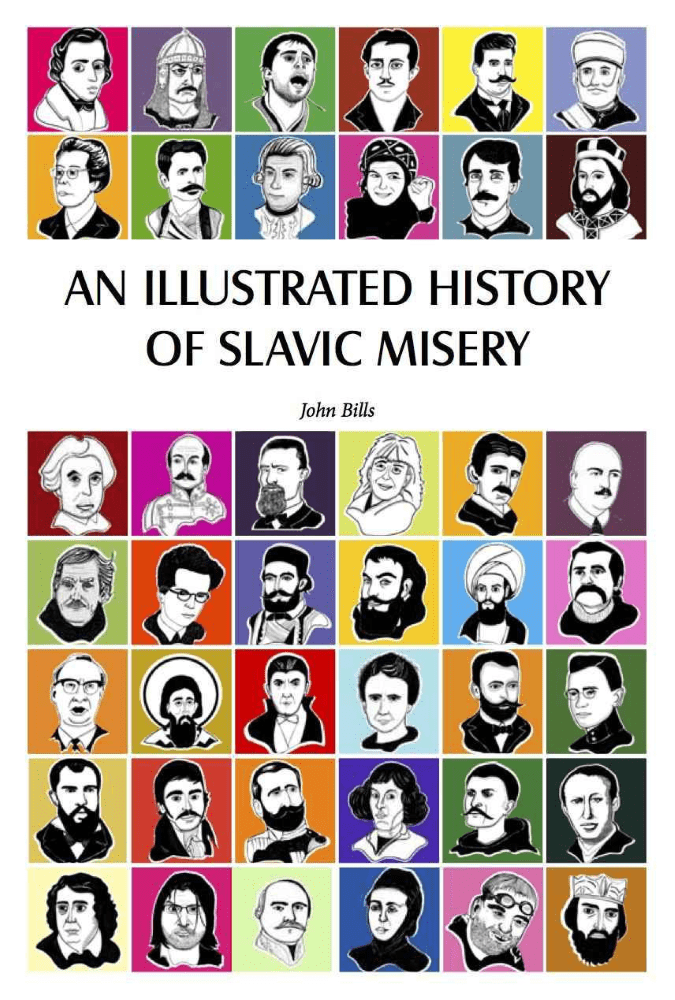
Where did you live before Slovenia, and what brought you here?
I was born in Iran and moved to the UK when I was two years old. I lived in Cumbria until the age of 15 and then moved to London. My mum moved the family to London so I could fulfil my dreams of working in television, and opportunities for this are plentiful there. My husband is Slovenian and, to be honest, if i didn’t meet him, I wouldn’t know much about Slovenia, if anything at all. After he and I got together, we visited many times until we eventually moved here.
What were your first impressions of Slovenia, and how do they compare with what you think now?
In 2012, early in our relationship, my husband brought me a book about Slovenia. The images were breath-taking. He also brought me gibanica and a bottle of pumpkin seed oil. I loved them, but I’d never been to Slovenia and barely knew anything about it.
I first came here in 2013 and I fell in love straight away! I loved the vibe, the energy and hospitality of the people, how clean the country was, how easy it was to get around, the amazing places to see, the food, the fresh air - pretty much everything. I can’t think of anything I didn’t like. I’ve seen more of it now, met more people, made more friends and learned more. I fall in love with Slovenia more and more as time goes on.
What do you wish someone had told you before you moved here?
I wish I had the contacts I do now. I wish I had done more intense research before coming here so I would have been to more events and met people much earlier. I advise anyone who’s moving to another country to do as much research and create connections online prior to making your move more enjoyable, so you’ll settle in faster in the areas that are important to you, and for me that’s business.
Have you started to learn Slovene?
I’ve been hearing and listening to Slovenian for almost six years now so I’ve managed to pick up a few words. I haven’t yet mastered sentences or verbs, but I started classes in February and because of my experience with the language I’m finding them quite easy. I’ve heard several times that it’s a difficult language, and I can understand why so I’m even more motivated to learn.
What methods do you use to learn it?
I ask my husband and friends how to say things and I ask for translations almost every day and listen to people’s conversations. I Google Translate a lot of things, my mother-in-law only speaks to me in Slovenian, and like I said, I’ve started classes.
How did you start looking for work here, and what was that experience like?
I have my own online speaker trainer business. I teach business owners how to deliver effective and persuasive presentations to help leverage time, reach more people and make a bigger impact.
But I love doing live events, and at first I didn’t see a market for it here and I wasn’t looking in the right places, so I gave up the idea of doing those. Then I met someone and he pointed me in the right direction and introduced me to so many different people that eventually I realised that there is an opportunity for me to bring my business here, do live events and teach what I know and love in Slovenia. And that’s what I’ve started to do.
You have a young son, how is he settling in?
My son loves Slovenia (or as he calls it, ‘Felinia’). He loves čevapčiči, the road trips we take - we try to go out of Ljubljana as often as possible. He loves visiting his babi in Novo Mesto, skiing, Atlantis, Tivoli park, the castles, the various workshops for children. Slovenia is definitely one of the world’s most child-friendly countries, so as a family we pretty much settled in immediately.
What are some things from Slovenia you think your home country could benefit from?
How to deal with snow! London goes into a complete shutdown when it snows - trains stop running, major traffic jams and people don’t turn up for work. I was in Kranjska Gora a few weeks ago and it snowed heavily overnight. People started dealing with it effectively the following morning - they just started clearing the snow. By 11am, people were driving normally. Life doesn’t have to stop when it snows - and London can definitely learn a thing or two about this.
The UK can definitely have more cool spots and things to do for young children. For example, my son loves Mala Ulica in Ljubljana- nothing like that exists in London and at such a low price. He also ended up in hospital a few weeks ago they had a huge room in the paediatric wing filled with so many toys, activities and teachers. He loved it! I’ve never seen such a room in any medical centre in London. Also, cheaper cinema tickets, so an evening out costs much less than in London.
And what are some thing from your home country that you think Slovenia could benefit from?
All I can think of is how the country is marketed. I can understand why it isn’t so loud for Slovenia, but it’s such a gem of a country, and I think more people would appreciate visiting and experiencing what it has to offer. Also, I’m yet to understand why we need to drive with lights on when it’s fully bright outside. I sometimes forget to turn the lights on and I get flashed by other drivers. I’m getting much better now, though.
Where are some of your favourite places to visit here?
My favourite part of Slovenia is definitely Ljubljana - I’m a city girl. But Slovenia as a whole is such a beautiful country, it’s difficult to pick one or two places. I love Bled, I love the castles here, Bohinj is stunning, I learned to ski in Kranjska Gora, I love driving to Novo Mesto and Savica Waterfall is amazing! I really love all of it. As a family, we try to take as many road trips as possible.
How do you feel about Slovenian food and drink?
I love Slovenian cuisine. I’ve learned to cook quite a few Slovenian dishes. My mother-in-law’s dishes are amazing and I picked up various recipes from her such as goveja juha, bucna juha, goveji golaz and testani krompir. I really enjoy cooking and eating Slovenian food.
However, something I'm still trying to get over is eating horse. I couldn't believe it at first that it’s on the menu in Slovenia. Unfortunately, I did try some - I was tricked into it - but never again!
What things frustrate you about life in Slovenia?
The thing I don’t like about Slovenia is how cars can turn left or right at a green light the same time as pedestrians can cross. I think this should be stopped to allow cars to cross without putting pedestrians, and drivers, at risk. Sometimes cyclists race across whilst a car is turning, and it’s pretty dangerous. Someone once told me that they’re planning to get rid of this system, so I hope they do it soon.
And what things delight you?
I love how in Ljubljana you can get so much done in one day! Obviously, the fact that it’s small plays a huge part in that. I also feel super productive here. I can’t put my finger on why exactly, but like I said, there’s something about the energy here.
Would you advise a friend to move to Slovenia?
I always do, especially friends with children. Every person I’ve spoken to who has kids and have moved to Slovenia love how easy life is here. When I tell people about the country, they think it’s too good to be true.
So do you think you’ll stay in Slovenia for the rest of your life?
I don’t plan so far ahead. Moving to Slovenia was a last-minute decision. I know for a fact that I’ll be spending a lot of time in Slovenia even if I don’t ‘live’ here forever. But for now and the foreseeable future Ljubljana is home, and I love it that way.
Where can people find out more about you and your work?
The best place is my website - www.haniehvidmar.com, I’m also holding my first event here, in Ljubljana, on April 19, at Celica. You can find all the details here.
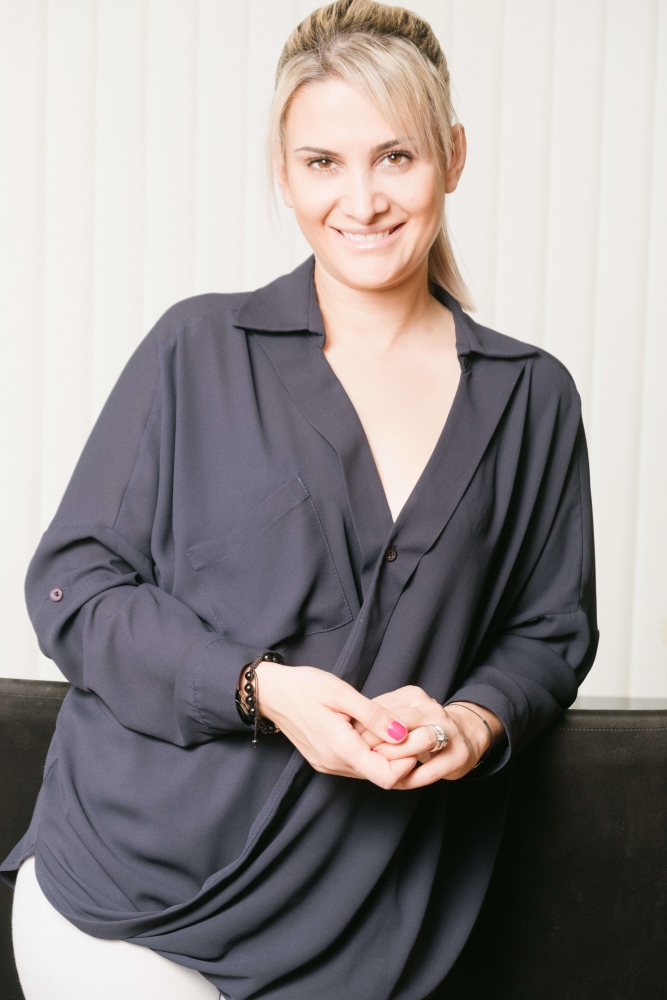
If you’d like to share your story with our readers, please get in touch at This email address is being protected from spambots. You need JavaScript enabled to view it.
Fanny Susan Copeland was a remarkable person whose life serves as a curiosity and inspiration. A British woman who was born in Ireland in 1872, grew up in Scotland, and moved to Slovenia in 1921, where she spent most of the rest of her life, dying at 98 in 1970, and buried at the foot of Mount Triglav.
Although she wrote an autobiography it was never published and will remain in copyright limbo until 2020. One person who’s seen this memoir is Eric Percival, whose great-great-great-grandfather, Fred Holloway, knew Fanny’s father, Ralph Copeland, once the Astronomer Royal for Scotland, with the two men meeting near Manchester in the early 1860's. Percival put together the original post that sparked my interest in Ms Copeland, and also kindly supplied some of the pictures that accompany this story. Unless otherwise stated, the facts set out below are also drawn from his account of her life, as based on her own and other reports.
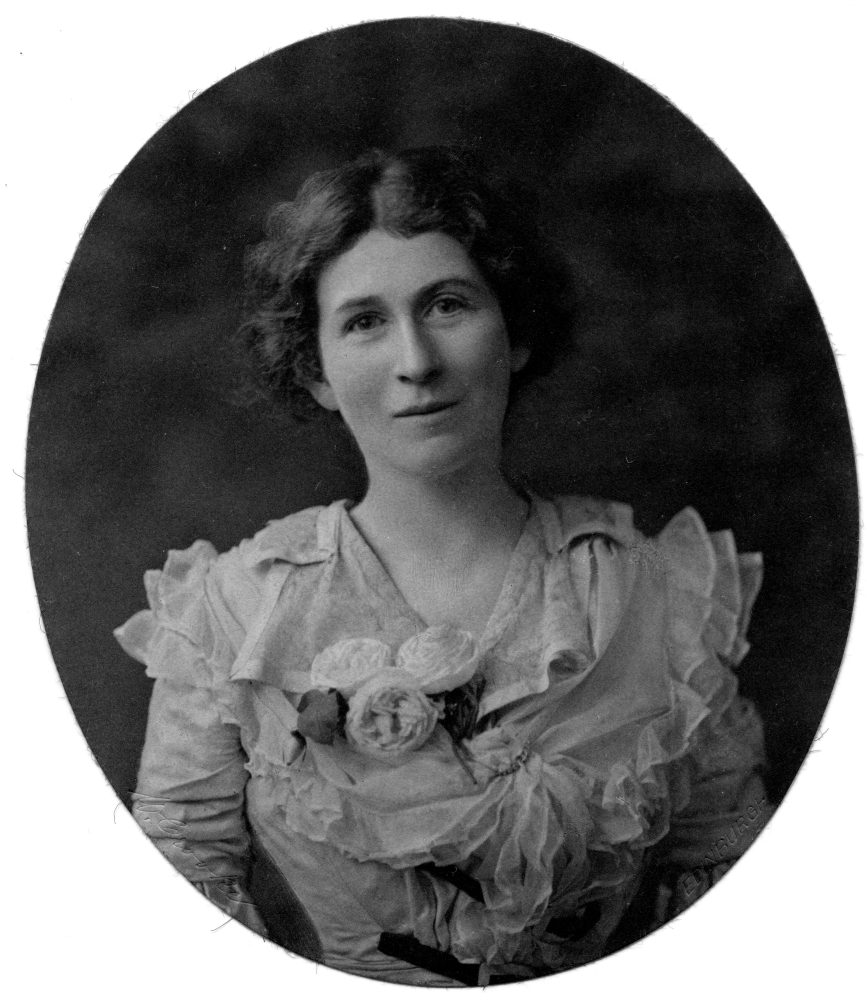
Although British by birth, Fanny was a thoroughly European woman, learning French and German as a child and being educated in Berlin shortly after turning 13. She also learned Latin, Italian, Danish, Norwegian and – due to her father’s interest in the Balkans – Slovenian. This connection with the country would be enough to get our attention, but Ms Copeland holds it because she bucks the standard narrative in terms of when and how one can make a new life for oneself. A brief outline of that life is as follows.
Fanny got married in 1894, at the age of 22, to escape her mother, but her husband was a 36-year old man who she never really liked. The couple had three children and then separated in 1908, finally divorcing in 1912, when Fanny was 40.
She developed a stronger connection with what would eventually become Yugoslavia soon after this, during the First World War, when she supported herself by doing translating for London-based South Slavic organisations. As part of this she translated Bogumil Vošnjak’s Bulwark against Germany: The fight of the Slovenes, the western branch of the Jugoslavs, for national existence, as well as serving as translator for the South Slavic delegation at the Paris Peace Conference.

In "traditional costume"
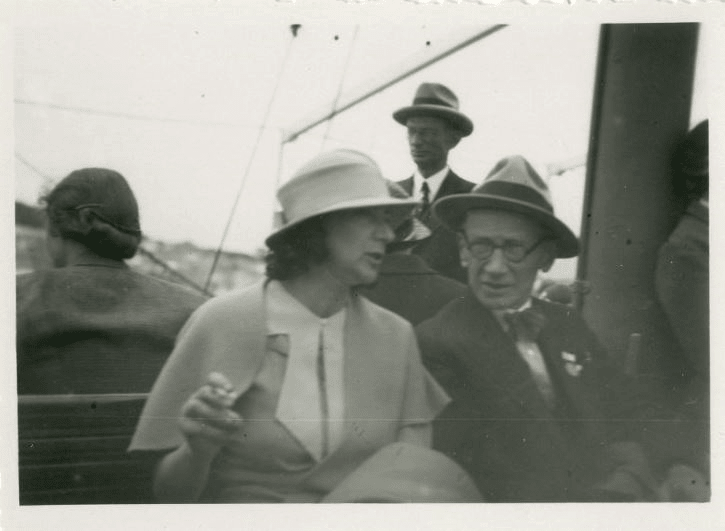
With Oton Župančič at the Congress of Dubrovnik in 1933
Ms Copeland then moved to Ljubljana in 1921, aged 49, when the city was part of the newly formed Kingdom of Serbs, Croats, and Slovenes. She was hired as a lecturer in English at the University (which itself only opened in July 1919), a post she held until 1941, when the Germans invaded. At this point, aged 69, she was arrested by the Gestapo and handed to the Italians, who moved her to Trieste, then to Arezzo and finally Bibbiena (in Etruria), where she spent the rest of the war “in open confinement”.
In 1953, aged 81, she finally moved back to Ljubljana. The death of her brother meant that she now had some savings, and thus Fanny Copeland lived in Hotel Slon for the rest of her life, continuing to work as a writer and translator.
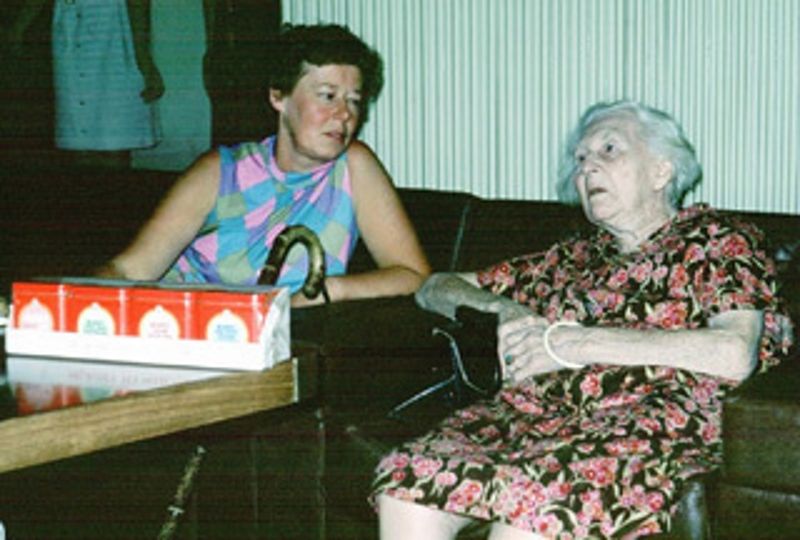
Ms Copeland, right, in the Hotel Slon, late 1960s
A pioneer of mountaineering tourism in Slovenia
But Fanny Copeland isn’t just a fine example of a person who didn’t let their gender or age dictate what they should be doing and when, or of someone who managed to successfully integrate themselves into a new country, as she also played a key role in the development of Alpinism as a local tourist offering, and in the promotion of Slovenia as a tourist destination. This section thus draws from an article by Janet Ashton called “Buried at his feet”: Fanny Susan Copeland, Triglav and Slovenia, and from another, Fanny Copeland and the geographical imagination, by Richard Clarke and Marija Anteric, both of which are recommended for more detail.
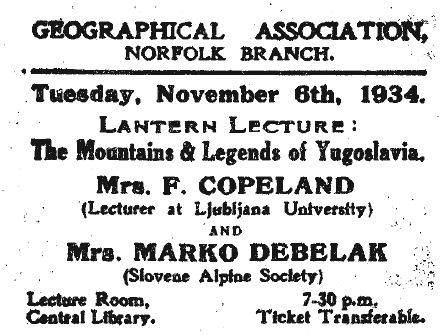
Ms Copeland felt a great attraction for the Julian Alps, and Slovenia the Slovenes in general, claiming they were the most Scottish of the Yugoslav communities, perhaps because of the mountains, long dominance by other powers, and characteristics of pragmatism and frugality.
She first climbed Triglav in the 1920s, not having taken up serious climbing until her 40s, and did so for the last time in 1958, just before her 87th birthday. She also wrote two books on the Julian Alps, Beautiful Mountains: In the Jugoslav Alps (1931), and A short guide to the Slovene Alps (Jugoslavia) for British and American tourists (1936). As she said in 1957, this was done in the “hope of attracting to Slovenia tourists of all types, from summer visitors in search of little-known beautiful and inexpensive Alpine resorts to Alpinists in search of accessible mountain ranges not yet wholly exploited or explored”.
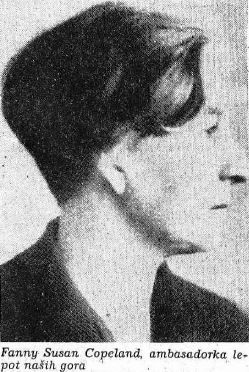
"Ambassador for the beauty of our mountains". www.gore-ljudje.net
Such efforts to reveal what in those days was still a very hidden gem were not without their obvious dangers, as she noted in a much earlier letter from 1923 when commenting on one of her many trips up Triglav: “It is an interesting walk, but as an expedition it is badly spoilt by the path having been made fool-proof. Result, every holiday is made hideous by hundreds of trippers, and the average person has to wait for a holiday to go up.”
Slovenski planinski muzej:- Fedor Košir, president of the Alpine Association of Slovenia and Fanny Copeland.
As mark of respect for her work to promote the Julian Alps, and to establish Triglav National Park, when Fanny Copeland died her funeral was organised by the Mountaineering Union of Slovenia. She was buried in the cemetery of the village church in Dovje, where you can still see her simple grave, as shown below.
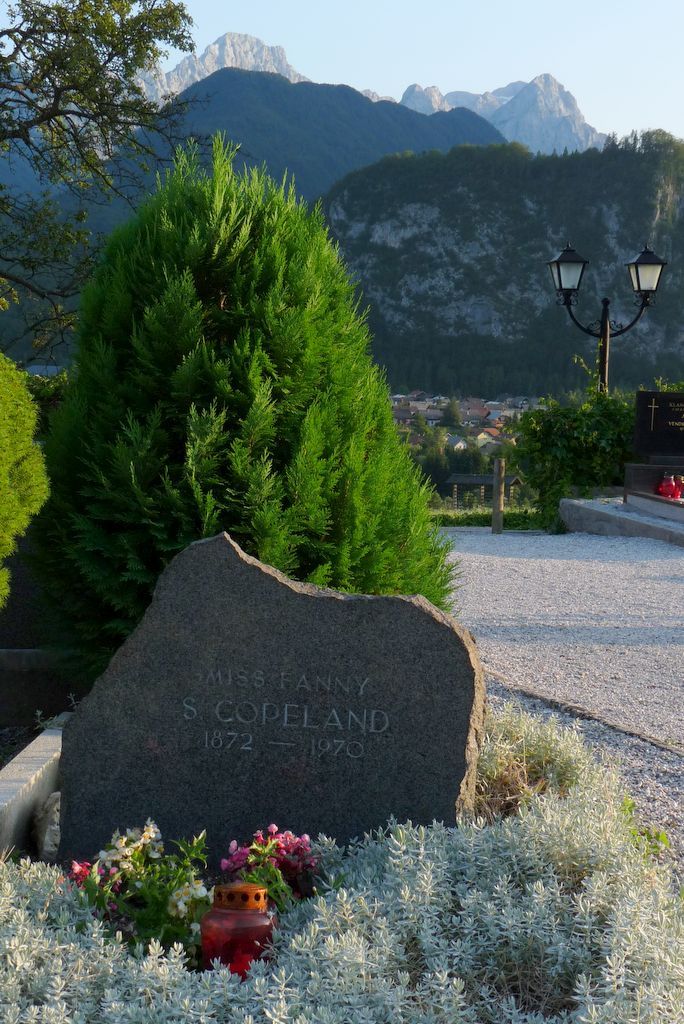
Wikipedia - Miran Hladnik CC-by-2.5
As Copeland wrote in 1931:
By fixed custom those that perish on Triglav are buried at his feet. In the pretty village church of Dovje, opposite the entrance of the stately Valley of the Gate (Vrata– truly a gate to be called Beautiful) they lie side by side. I think they would have it so. The long shadows of the regal avenue of peaks, down which they passed to their last adventure, sweep over their graves as the days and the years roll by; on All Souls’ day the mountaineers bring them pious offerings of prayer and lights, and from their tombstones their names cry greeting and warning to the hosts that go up year by year to visit the mountains, - greeting to the many who go up by the blazed trail where every danger spot is made safe with iron bolt and wire rope, to protect the unwary and put heart into the timid, - greeting to the few who seek, like themselves, to win the goal without guidance save the love of the heights, and no company except the extreme mysteries of life and death – greeting to the cragsman and the lover, to schoolboy and hunter, to smuggler and spy, and the ski-shod friend of the snows….
So if you find yourself in Hotel Slon, on Mount Triglav or by the village of Dovje, spare a thought for the remarkable Fanny Copeland, a woman who not only did as much as anyone else working in English to make the case for a separate Slovenian identity, one distinct from land’s association with the Habsburgs, Slavs and Serbo-Croatians, but also did much to bring the beauty of the land to a wider audience, and to share the best of her adoptive home with the world.
Postscript
As to what life was really like under Tito for a woman born to the academic elite under Queen Victoria, Copeland addresses this at the end of her autobiography, with a postscript to the reader:
But have you really found good reasons to go and live in a ‘communist’ state? This was a question I was often asked soon after my return to Ljubljana. Well - for one thing it depends on what you mean by 'Communism'. If you mean a totalitarian regime then my reply is that no Yugoslav would put up with such a system… The Yugoslavs are stout individualists, but they appreciate law and order. Ask any British tourist who has visited Yugoslavia in recent years.
All our stories on mountaineering in Slovenia can be found here


